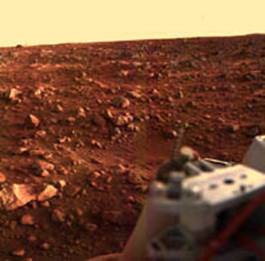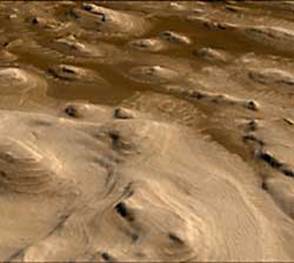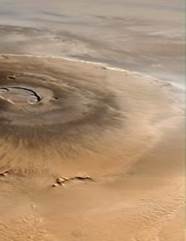The largest planet in terms of the size of the terrestrial group. terrestrial planets
The inner region of the solar system is inhabited by a variety of bodies: large planets, their satellites, as well as small bodies - asteroids and comets. Since 2006, a new subgroup has been introduced in the group of planets - dwarf planets, which have the internal qualities of planets (spheroidal shape, geological activity), but due to their small mass, are not able to dominate in the vicinity of their orbit. Now the 8 most massive planets - from Mercury to Neptune - are simply called planets (planet), although in conversation astronomers often call them "large planets" for clarity, to distinguish them from dwarf planets. The term "minor planet", which has been applied to asteroids for many years, is now recommended not to be used to avoid confusion with dwarf planets.
In the region of major planets, we see a clear division into two groups of 4 planets each: the outer part of this region is occupied by giant planets, and the inner part is occupied by much less massive terrestrial planets. The group of giants is also usually divided in half: gas giants (Jupiter and Saturn) and ice giants (Uranus and Neptune). In the group of terrestrial-type planets, a halving is also planned: Venus and the Earth are extremely similar to each other in many physical parameters, and Mercury and Mars are inferior to them in mass by an order of magnitude and almost devoid of an atmosphere (even for Mars it is hundreds of times smaller than Earth, and for Mercury is practically absent).
It should be noted that among the two hundred satellites of the planets, at least 16 bodies can be distinguished that have the internal properties of full-fledged planets. They often exceed the size and mass of dwarf planets, but at the same time they are under the control of gravity of much more massive bodies. We are talking about the Moon, Titan, the Galilean satellites of Jupiter and the like. Therefore, it would be natural to introduce into the nomenclature of the solar system a new group for such "subordinate" planetary-type objects, calling them "satellite planets". But while this idea is under discussion.

Let's get back to the terrestrial planets. Compared to giants, they are attractive in that they have a solid surface on which space probes can land. Since the 1970s, automatic stations and self-propelled vehicles of the USSR and the USA have repeatedly landed and successfully worked on the surface of Venus and Mars. There have been no landings on Mercury yet, since flights in the vicinity of the Sun and landing on a massive atmosphereless body are associated with great technical problems.
When studying terrestrial planets, astronomers do not forget the Earth itself. The analysis of images from space made it possible to understand a lot in the dynamics of the earth's atmosphere, in the structure of its upper layers (where planes and even balloons do not rise), in the processes occurring in its magnetosphere. By comparing the structure of the atmospheres of Earth-like planets, much can be understood in their history and more accurately predict their future. And since all higher plants and animals live on the surface of our (or not only our?) planet, the characteristics of the lower layers of the atmosphere are especially important for us. This lecture is about terrestrial planets; mainly to their appearance and surface conditions.
The brightness of the planet. Albedo
Looking at the planet from afar, we can easily distinguish between bodies with and without an atmosphere. The presence of an atmosphere, or rather, the presence of clouds in it, makes the appearance of the planet changeable and significantly increases the brightness of its disk. This is clearly seen if the planets are arranged in a row from completely cloudless (atmospheric) to completely covered by clouds: Mercury, Mars, Earth, Venus. Stony atmosphereless bodies are similar to each other to the point of almost complete indistinguishability: compare, for example, large-scale images of the Moon and Mercury. Even an experienced eye can hardly distinguish between the surfaces of these dark bodies, densely covered with meteorite craters. But the atmosphere gives any planet a unique look.
The presence or absence of an atmosphere on a planet is controlled by three factors: the temperature and gravitational potential at the surface, as well as the global magnetic field. Only the Earth has such a field, and it significantly protects our atmosphere from solar plasma flows. The moon lost its atmosphere (if it had any at all) due to a low critical velocity near the surface, and Mercury due to high temperature and strong solar wind. Mars, with almost the same gravity as Mercury, was able to retain the remnants of the atmosphere, because due to its distance from the Sun, it is cold and not so intensely blown by the solar wind.
In terms of their physical parameters, Venus and Earth are almost twins. They have very similar size, mass, and hence the average density. Their internal structure should also be similar - crust, mantle, iron core - although there is no certainty about this yet, since there are no seismic and other geological data on the bowels of Venus. Of course, we did not penetrate deeply into the bowels of the Earth either: in most places at 3-4 km, at some points at 7-9 km, and only in one at 12 km. This is less than 0.2% of the Earth's radius. But seismic, gravimetric and other measurements make it possible to judge the interior of the earth in great detail, while there are almost no such data for other planets. Detailed maps of the gravitational field have been obtained only for the Moon; heat fluxes from the bowels have been measured only on the Moon; seismometers have so far also worked only on the Moon and (not very sensitive) on Mars.
Geologists still judge the inner life of planets by the features of their solid surface. For example, the absence of signs of lithospheric plates near Venus significantly distinguishes it from the Earth, in the evolution of the surface of which tectonic processes (continental drift, spreading, subduction, etc.) play a decisive role. At the same time, some indirect evidence points to the possibility of plate tectonics on Mars in the past, as well as ice field tectonics on Jupiter's moon Europa. Thus, the external similarity of the planets (Venus - Earth) does not guarantee the similarity of their internal structure and the processes taking place in their depths. And planets that are not similar to each other can demonstrate similar geological phenomena.
Let us return to what is available to astronomers and other specialists for direct study, namely, to the surface of planets or their cloud layer. In principle, the opacity of the atmosphere in the optical range is not an insurmountable obstacle to studying the solid surface of the planet. Radar from the Earth and from space probes made it possible to study the surfaces of Venus and Titan through their atmospheres that are not transparent to light. However, these works are of an episodic nature, and systematic studies of the planets are still carried out with optical instruments. More importantly, the Sun's optical radiation is the main source of energy for most planets. Therefore, the ability of the atmosphere to reflect, scatter and absorb this radiation directly affects the climate near the surface of the planet.
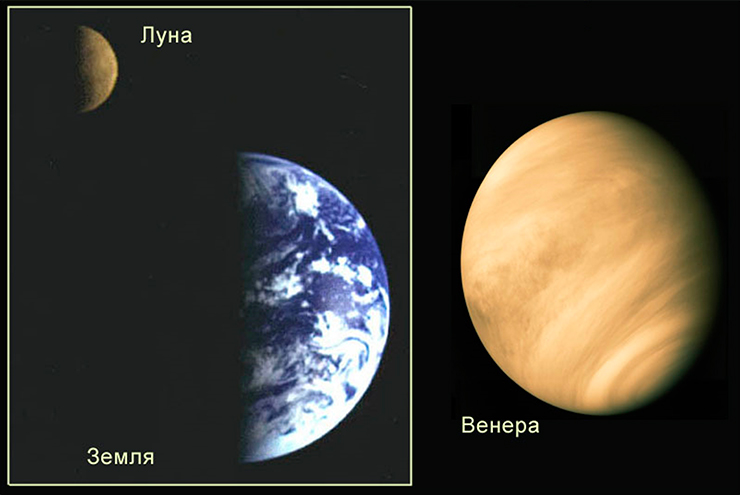
The brightest luminary in the night sky, apart from the Moon, is Venus. It is very bright, not only because of its relative proximity to the Sun, but also because of the dense cloud layer of drops of concentrated sulfuric acid, which perfectly reflects light. Our Earth is also not too dark, since 30-40% of the Earth's atmosphere is filled with water clouds, and they also scatter and reflect light well. Here is a photograph (fig. above), where the Earth and the Moon were simultaneously framed. This image was taken by the Galileo space probe as it flew past Earth on its way to Jupiter. See how much the Moon is darker than the Earth and generally darker than any planet with an atmosphere. This is a general pattern - non-atmospheric bodies are very dark. The fact is that under the influence of cosmic radiation, any solid gradually darkens.
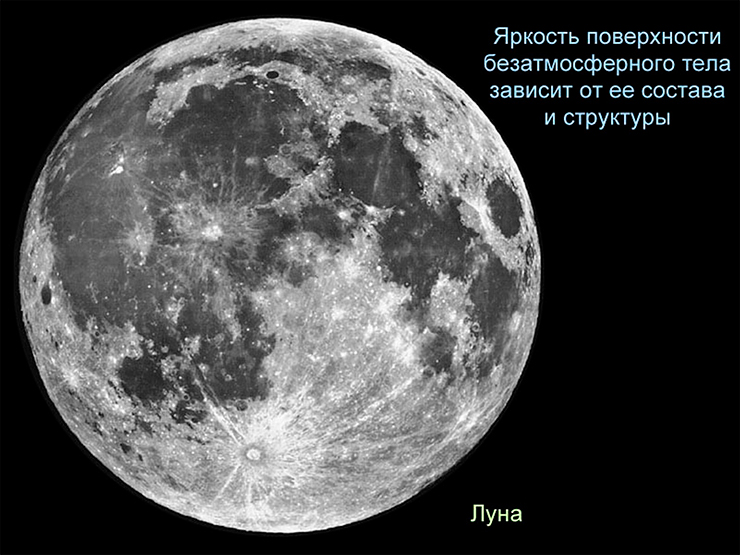
The statement that the surface of the Moon is dark is usually puzzling: at first glance, the lunar disk looks very bright; on a cloudless night it even blinds us. But this is only in contrast to the even darker night sky. To characterize the reflectivity of any body, a quantity called albedo is used. This is the degree of whiteness, that is, the coefficient of reflection of light. Albedo equal to zero - absolute blackness, complete absorption of light. An albedo equal to one is total reflection. Physicists and astronomers have several different approaches to determining albedo. It is clear that the brightness of the illuminated surface depends not only on the type of material, but also on its structure and orientation relative to the light source and the observer. For example, fluffy freshly fallen snow has one reflectance value, while snow that you stepped on with your boot will have a completely different value. And the dependence on orientation is easy to demonstrate with a mirror, letting in sunbeams.
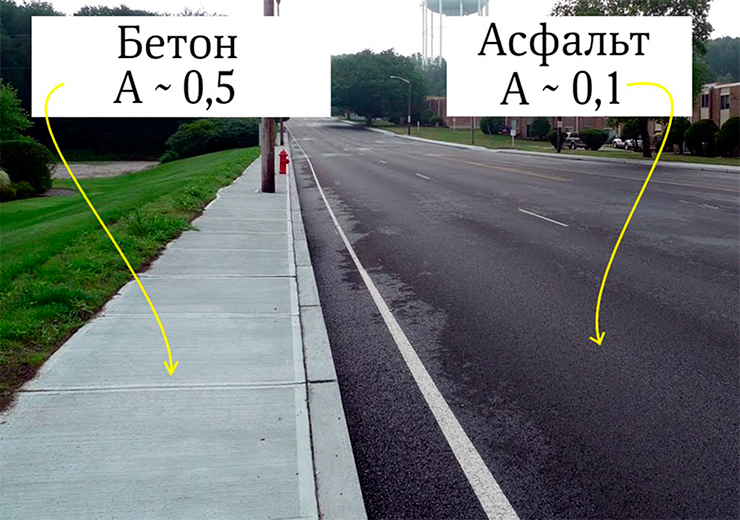
The entire range of possible albedo values is covered by known space objects. Here is the Earth, reflecting about 30% of the sun's rays, mainly due to clouds. And the continuous cloud cover of Venus reflects 77% of the light. Our Moon is one of the darkest bodies, reflecting about 11% of the light on average; and its visible hemisphere, due to the presence of vast dark "seas", reflects light even worse - less than 7%. But there are also darker objects; for example, the asteroid 253 Matilda has an albedo of 4%. On the other hand, there are surprisingly bright bodies: Saturn's moon Enceladus reflects 81% visible light, and its geometric albedo is simply fantastic - 138%, i.e. it is brighter than a perfectly white disk of the same cross section. It's hard to even understand how he does it. Pure snow on Earth reflects light even worse; what kind of snow lies on the surface of this small and pretty Enceladus?

Thermal balance
The temperature of any body is determined by the balance between the influx of heat to it and its losses. Three mechanisms of heat exchange are known: radiation, heat conduction and convection. The last two of these require direct contact with environment, so in space vacuum The most important and, in fact, the only one is the first mechanism - radiation. For designers of space technology, this creates considerable problems. They have to take into account several sources of heat: the Sun, the planet (especially in low orbits) and the internal units of the spacecraft itself. And there is only one way to release heat - radiation from the surface of the apparatus. To maintain the balance of heat flows, space technology designers regulate the effective albedo of the spacecraft using screen-vacuum insulation and radiators. When such a system fails, the conditions in the spacecraft can become quite uncomfortable, as the story of the Apollo 13 mission to the Moon reminds us.
But for the first time, this problem was faced in the first third of the 20th century by the creators of high-altitude balloons - the so-called stratostats. In those years, they still did not know how to create complex thermal control systems for a sealed gondola, so they limited themselves to a simple selection of the albedo of its outer surface. How sensitive body temperature is to its albedo, says the history of the first flights into the stratosphere.

The gondola of your stratospheric balloon FNRS-1 Swiss Auguste Picard painted white on one side and black on the other. The idea was that the temperature in the gondola could be controlled by turning the sphere one way or another towards the Sun. For rotation, a propeller was installed outside. But the device did not work, the sun shone from the "black" side and the internal temperature in the first flight rose to 38 °C. On the next flight, the entire capsule was simply covered with silver to reflect the sun's rays. Inside it became -16 ° C.
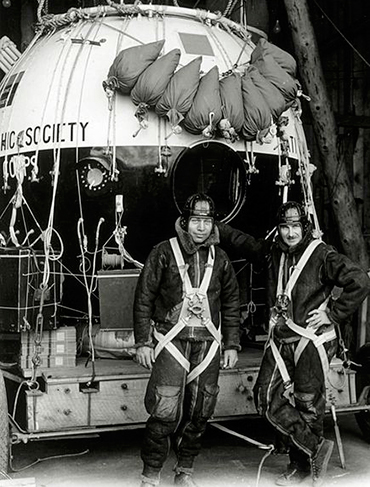 American stratospheric designers explorer took Picard's experience into account and adopted a compromise: they painted the top of the capsule white and the bottom black. The idea was that the top half of the sphere would reflect solar radiation, while the bottom half would absorb heat from the Earth. This option turned out to be not bad, but also not ideal: during the flights, it was 5 ° C in the capsule.
American stratospheric designers explorer took Picard's experience into account and adopted a compromise: they painted the top of the capsule white and the bottom black. The idea was that the top half of the sphere would reflect solar radiation, while the bottom half would absorb heat from the Earth. This option turned out to be not bad, but also not ideal: during the flights, it was 5 ° C in the capsule.
Soviet stratonauts simply insulated the aluminum capsules with a layer of felt. As practice has shown, this decision was the most successful. The internal heat, mainly generated by the crew, proved to be sufficient to maintain a stable temperature.
But if the planet does not have its own powerful heat sources, then the value of albedo is very important for its climate. For example, our planet absorbs 70% of the sunlight falling on it, converting it into its own infrared radiation, supporting the water cycle in nature through it, storing it as a result of photosynthesis in biomass, oil, coal, gas. The moon absorbs almost all sunlight, stupidly converting it into high-entropy infrared radiation and thereby maintaining its rather high temperature. But Enceladus, with its perfectly white surface, proudly repels almost all sunlight from itself, for which it pays with a monstrously low surface temperature: on average about -200 ° C, and in some places up to -240 ° C. However, this satellite - "all in white" - does not suffer much from the outside cold, since it has alternative source energy - the tidal gravitational influence of the neighbor Saturn (), maintaining its subglacial ocean in a liquid state. But the terrestrial planets have very weak internal heat sources, so the temperature of their solid surface largely depends on the properties of the atmosphere - on its ability, on the one hand, to reflect part of the sun's rays back into space, and on the other hand, to retain the energy of radiation that has passed through atmosphere to the surface of the planet.
The greenhouse effect and the planet's climate
Depending on how far the planet is from the Sun, and what proportion of sunlight it absorbs, the temperature conditions on the surface of the planet, its climate, are formed. What does the spectrum of any self-luminous body, such as a star, look like? In most cases, the spectrum of a star is a “one-humped”, almost Planck, curve, in which the position of the maximum depends on the temperature of the star’s surface. Unlike a star, the planet's spectrum has two “humps”: it reflects part of the starlight in the optical range, and absorbs and re-radiates the other part in the infrared range. The relative area under these two humps is precisely determined by the degree of light reflection, that is, the albedo.
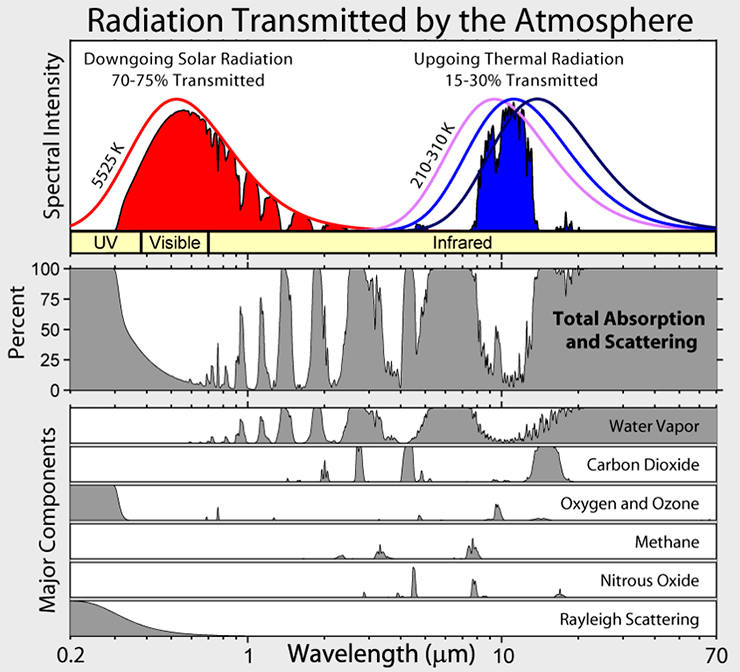
Let's look at the two planets closest to us - Mercury and Venus. At first glance, the situation is paradoxical. Venus reflects almost 80% of sunlight and absorbs only about 20%. And Mercury reflects almost nothing, but absorbs everything. In addition, Venus is farther from the Sun than Mercury; 3.4 times less sunlight falls per unit of its cloudy surface. Taking into account the difference in albedo, each square meter of the solid surface of Mercury receives almost 16 times more solar heat than the same surface on Venus. And yet, on the entire solid surface of Venus, hellish conditions - a huge temperature (tin and lead melt!), And Mercury is cooler! At the poles there is generally Antarctica, and at the equator the average temperature is 67 ° C. Of course, during the day, the surface of Mercury heats up to 430 ° C, and at night it cools down to -170 ° C. But already at a depth of 1.5-2 meters, daily fluctuations smooth out, and we can talk about an average surface temperature of 67 °C. It's hot, of course, but you can live. And in the middle latitudes of Mercury, room temperature is generally.

What's the matter? Why is Mercury, close to the Sun and willingly absorbing its rays, heated to room temperature, while Venus, which is more distant from the Sun and actively reflecting its rays, is heated like a furnace? How will physics explain this?
Earth's atmosphere is almost transparent: it lets through 80% of the incoming sunlight. As a result of convection, air cannot escape into space - the planet does not let it go. So, it can be cooled only in the form of infrared radiation. And if the IR radiation remains locked, then it heats those layers of the atmosphere that do not release it. These layers themselves become a source of heat and partially direct it back to the surface. Some of the radiation goes into space, but most of it returns to the Earth's surface and heats it until thermodynamic equilibrium is established. How is it installed?
The temperature rises, and the maximum in the spectrum shifts (Wien's law) until it finds a "transparency window" in the atmosphere, through which IR rays will escape into space. The balance of heat flows is established, but at a higher temperature than it could be in the absence of the atmosphere. This is the greenhouse effect.

In our lives, we often encounter the greenhouse effect. And not only in the form of a garden greenhouse or a pot placed on the stove, which we cover with a lid to reduce heat transfer and speed up boiling. Just these examples do not demonstrate a pure greenhouse effect, since both radiative and convective heat removal decreases in them. Much closer to the described effect is the example of a clear frosty night. With dry air and a cloudless sky (for example, in a desert), after sunset, the earth cools quickly, and moist air and clouds smooth out daily temperature fluctuations. Unfortunately, this effect is well known to astronomers: clear starry nights can be especially cold, which makes working at the telescope very uncomfortable. Returning to the figure above, we will see the reason: it is the water vapor in the atmosphere that serves as the main obstacle to the heat-carrying infrared radiation.

The moon has no atmosphere, which means there is no greenhouse effect. On its surface, thermodynamic equilibrium is established in an explicit form, there is no exchange of radiation between the atmosphere and the solid surface. Mars has a rarefied atmosphere, but still its greenhouse effect adds its own 8 ° C. And it adds almost 40 °C to the Earth. If our planet did not have such a dense atmosphere, the temperature of the Earth would be 40 ° C lower. Today it averages 15 °C all over the globe, and it would be -25 °C. All the oceans would freeze, the surface of the Earth would turn white from snow, the albedo would increase, and the temperature would drop even lower. In general - a terrible thing! But it's good that the greenhouse effect in our atmosphere works and warms us. And it works even more strongly on Venus - it raises the average Venusian temperature by more than 500 degrees.
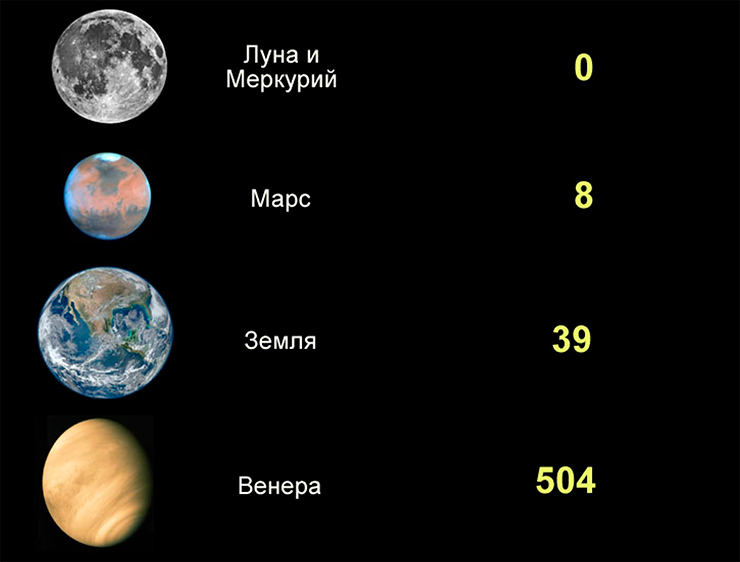
Surface of the planets
Until now, we have not embarked on a detailed study of other planets, mainly limited to observing their surface. And how important is information about the appearance of the planet for science? What value can tell us the image of its surface? If it is a gas planet, like Saturn or Jupiter, or a solid one, but covered with a dense layer of clouds, like Venus, then we see only the upper cloud layer, therefore, we have almost no information about the planet itself. The cloudy atmosphere, as geologists say, is a super-young surface - today it is like this, and tomorrow it will be different, or not tomorrow, but in 1000 years, which is only a moment in the life of the planet.
The Great Red Spot on Jupiter or two planetary cyclones on Venus have been observed for 300 years, but they tell us only a few general properties modern dynamics of their atmospheres. Our descendants, looking at these planets, will see a completely different picture, and what picture our ancestors could see, we will never know. Thus, looking from the side at planets with a dense atmosphere, we cannot judge their past, since we see only a variable cloud layer. A completely different matter is the Moon or Mercury, the surfaces of which keep traces of meteorite bombardments and geological processes that have taken place over the past billion years.

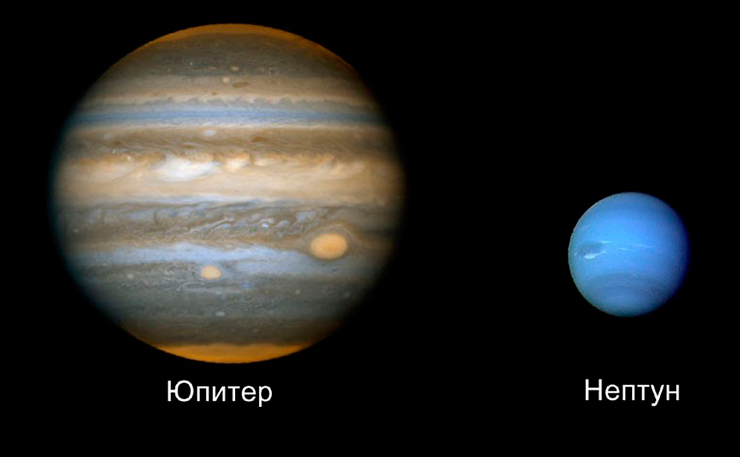
And such bombardments of giant planets leave practically no traces. One of these events happened at the end of the twentieth century right before the eyes of astronomers. Comet Shoemaker-Levy 9. In 1993, a strange chain of two dozen small comets was seen near Jupiter. The calculation showed that these are fragments of one comet that flew near Jupiter in 1992 and was torn apart by the tidal effect of its powerful gravitational field. The astronomers did not see the episode of the comet's disintegration itself, but caught only the moment when the chain of cometary fragments was moving away from Jupiter by a "train". If the disintegration had not occurred, then the comet, having approached Jupiter along a hyperbolic trajectory, would have gone into the distance along the second branch of the hyperbola and, most likely, would never have approached Jupiter again. But the body of the comet could not withstand the tidal stress and collapsed, and the energy expended on deformation and rupture of the comet's body reduced the kinetic energy of its orbital motion, transferring the fragments from a hyperbolic orbit to an elliptical one, closed around Jupiter. The distance of the orbit at the pericenter turned out to be less than the radius of Jupiter, and in 1994 the fragments crashed into the planet one after another.
The incident was huge. Each "fragment" of the cometary nucleus is an ice block 1 × 1.5 km in size. They took turns flying into the atmosphere of a giant planet at a speed of 60 km / s (the second space velocity for Jupiter), having a specific kinetic energy in (60/11) 2 = 30 times greater than if it were a collision with the Earth. Astronomers watched with great interest from the safety of Earth the cosmic catastrophe on Jupiter. Unfortunately, the fragments of the comet hit Jupiter from the side that was not visible from the Earth at that moment. Fortunately, just at that time, the Galileo space probe was on its way to Jupiter, it saw these episodes and showed them to us. Due to the rapid daily rotation of Jupiter, the collision regions became accessible both to ground-based telescopes and, which is especially valuable, to near-Earth ones, such as the Hubble Space Telescope, in a few hours. This was very useful, since each block, crashing into the atmosphere of Jupiter, caused a colossal explosion that destroyed the upper cloud layer and created a window of vision deep into the Jupiter atmosphere for some time. So, thanks to the comet bombardment, we were able to look there for a while. But 2 months passed and there were no traces left on the cloudy surface: the clouds covered all the windows, as if nothing had happened.
Another thing - Earth. On our planet, meteorite scars remain for a long time. Here is the most popular meteorite crater with a diameter of about 1 km and an age of about 50 thousand years. He is still clearly visible. But craters formed more than 200 million years ago can only be found using subtle geological methods. They are not visible from above.
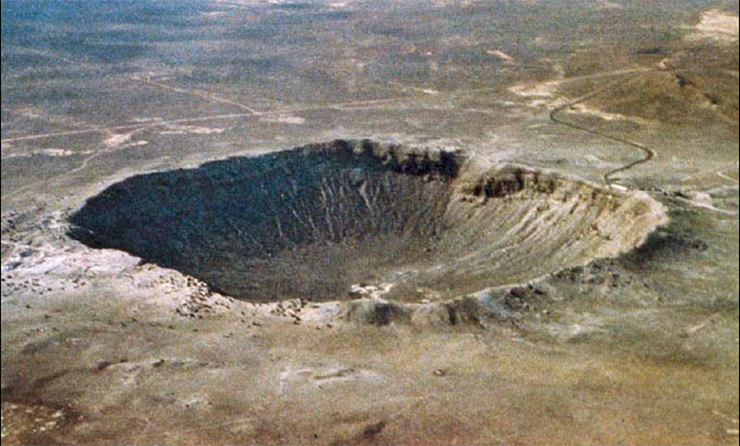
By the way, there is a fairly reliable ratio between the size of a large meteorite that fell to Earth and the diameter of the crater formed by it - 1:20. A kilometer-diameter crater in Arizona was formed by the impact of a small asteroid with a diameter of about 50 m. And in ancient times, larger “shells” hit the Earth - both kilometer and even ten kilometers. Today we know about 200 large craters; they are called astroblemes (heavenly wounds); and several new ones are discovered every year. The largest with a diameter of 300 km was found in southern Africa, its age is about 2 billion years. On the territory of Russia, the largest crater Popigai in Yakutia with a diameter of 100 km. Surely there are larger ones, for example, at the bottom of the oceans, where they are more difficult to notice. True, the ocean floor is geologically younger than the continents, but it seems that in Antarctica there is a crater with a diameter of 500 km. It is under water and only the profile of the bottom indicates its presence.
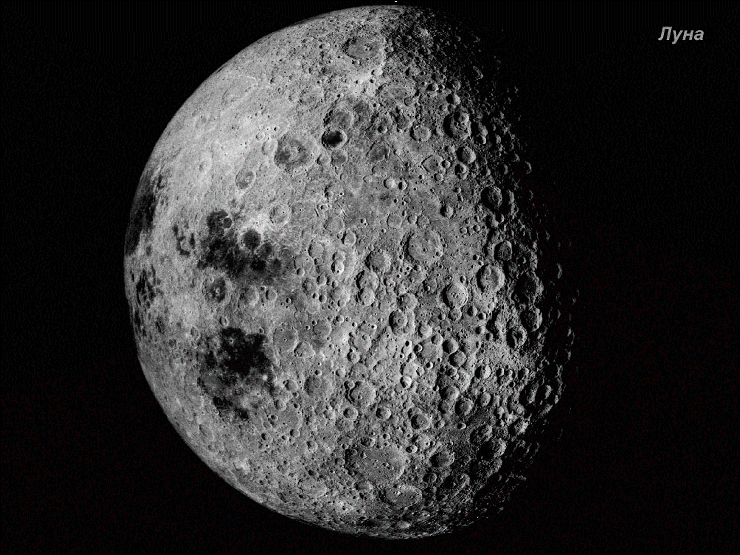
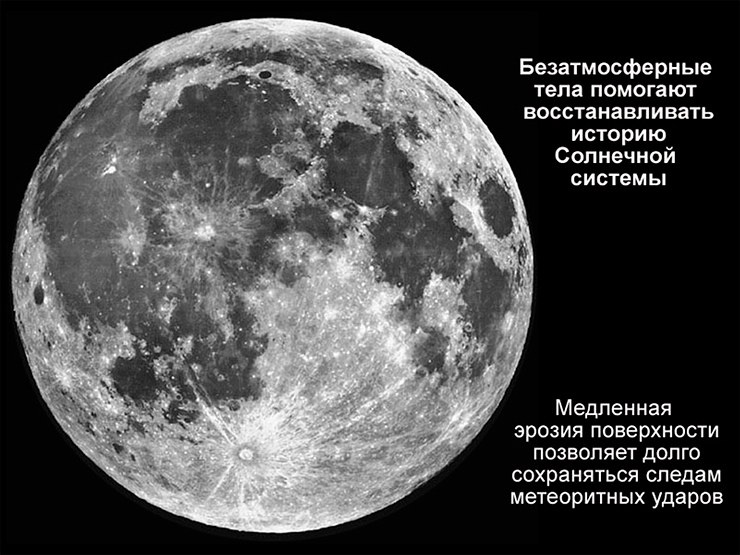
On a surface Moon, where there is neither wind nor rain, where there are no tectonic processes, meteorite craters persist for billions of years. Looking at the moon through a telescope, we read the history of the cosmic bombardment. On the reverse side is an even more useful picture for science. It seems that for some reason, especially large bodies never fell there, or, falling, they could not break through the lunar crust, which on the reverse side is twice as thick as on the visible one. Therefore, the flowing lava did not fill large craters and did not hide historical details. There is a meteor crater on every patch of the lunar surface, large or small, and there are so many of them that younger ones destroy those that formed earlier. Saturation has occurred: the Moon can no longer become more cratered than it is. Craters are everywhere. And this is a wonderful chronicle of the history of the solar system. It identified several episodes of active cratering, including the era of heavy meteorite bombardment (4.1-3.8 billion years ago), which left traces on the surface of all terrestrial planets and many satellites. Why meteor showers hit the planets during that era, we have yet to understand. We need new data on the structure of the lunar interior and the composition of matter at different depths, and not just on the surface, from which samples have been collected so far.
Mercury outwardly similar to the moon, because, like it, it is devoid of an atmosphere. Its rocky surface, not subject to gas and water erosion, retains traces of meteorite bombardment for a long time. Among the terrestrial planets, Mercury holds the oldest geological traces, about 4 billion years old. But there is no Mercury on the surface major seas, filled with dark solidified lava and similar to lunar seas, although large impact craters there is no less than on the moon.
Mercury is about one and a half times the size of the Moon, but its mass exceeds the Moon by 4.5 times. The fact is that the Moon is almost entirely a rocky body, while Mercury has a huge metal core, apparently consisting mainly of iron and nickel. The radius of its metal core is about 75% of the radius of the planet (and the Earth is only 55%). The volume of the metal core of Mercury is 45% of the volume of the planet (and the Earth has only 17%). Therefore, the average density of Mercury (5.4 g / cm 3) is almost equal to the average density of the Earth (5.5 g / cm 3) and significantly exceeds the average density of the Moon (3.3 g / cm 3). Having a large metal core, Mercury could have surpassed the Earth in its average density, if not for the low gravity on its surface. Having a mass of only 5.5% of the earth's, it has an almost three times lower gravity, which is not able to compact its bowels as much as the bowels of the Earth, in which even the silicate mantle has a density of about (5 g / cm 3).
Mercury is difficult to study because it moves close to the Sun. To launch an interplanetary apparatus from the Earth to it, it must be strongly slowed down, that is, accelerated in the direction opposite to the Earth's orbital motion; only then will it begin to “fall” towards the Sun. It is impossible to do this immediately with a rocket. Therefore, in the two so far carried out flights to Mercury, gravitational maneuvers in the field of the Earth, Venus and Mercury itself were used to decelerate the space probe and transfer it to Mercury's orbit.

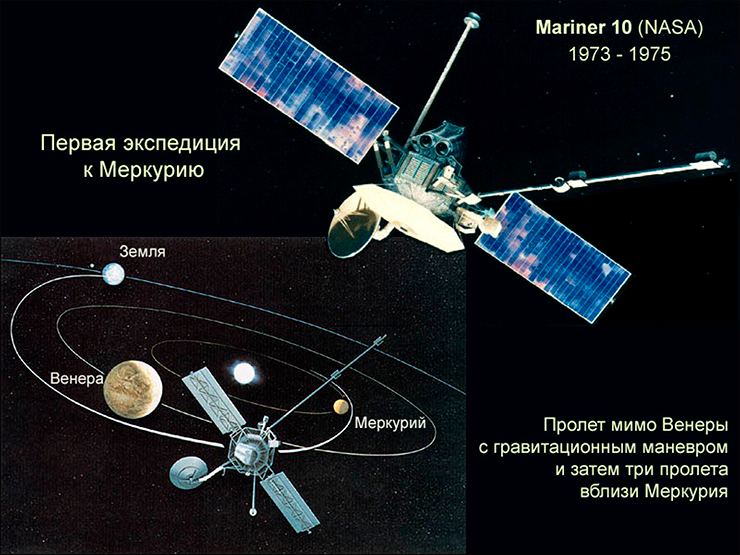
For the first time to Mercury went in 1973 "Mariner-10" (NASA). It first approached Venus, slowed down in its gravitational field, and then passed close to Mercury three times in 1974-75. Since all three meetings took place in the same region of the planet's orbit, and its daily rotation is synchronized with the orbital, all three times the probe photographed the same hemisphere of Mercury illuminated by the Sun.
There were no flights to Mercury for the next few decades. And only in 2004 was it possible to launch the second device - MESSENGER ( Mercury Surface, Space Environment, Geochemistry, and Ranging; NASA). Having carried out several gravitational maneuvers near the Earth, Venus (twice) and Mercury (three times), in 2011 the probe went into orbit around Mercury and conducted research on the planet for 4 years.
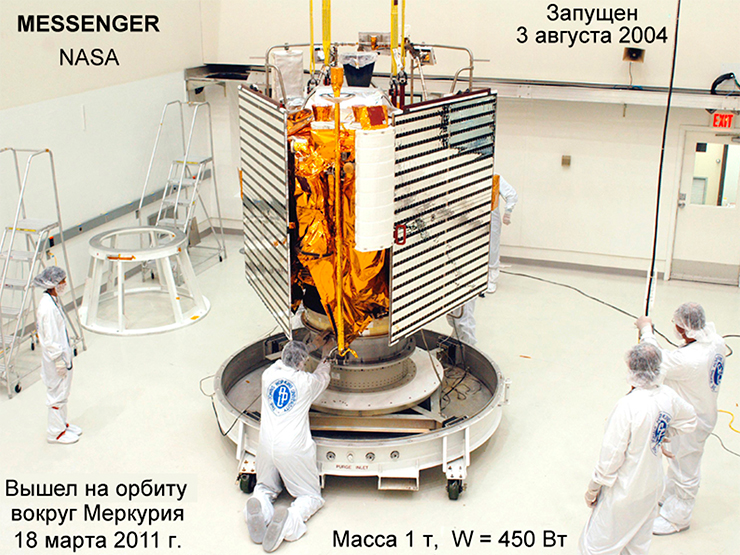
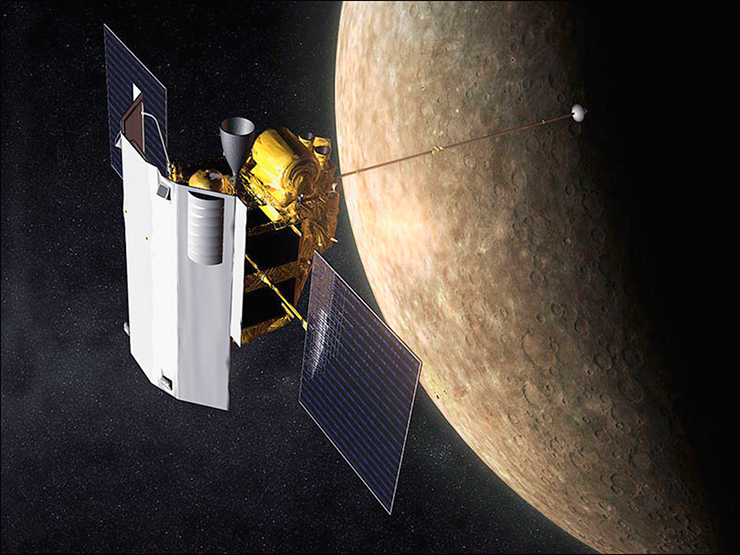
Work near Mercury is complicated by the fact that the planet is on average 2.6 times closer to the Sun than the Earth, so the flux of sunlight there is almost 7 times greater. Without a special "solar umbrella", the electronic filling of the probe would overheat. A third expedition to Mercury, called BepiColombo, Europeans and Japanese participate in it. The launch is scheduled for autumn 2018. Two probes will fly at once, which will enter orbit around Mercury at the end of 2025 after a flyby near the Earth, two near Venus and six near Mercury. In addition to a detailed study of the planet's surface and its gravitational field, a detailed study of the magnetosphere and magnetic field Mercury, which is a mystery to scientists. Although Mercury rotates very slowly, and its metal core should have cooled and solidified long ago, the planet has a dipole magnetic field that is 100 times inferior to Earth's in strength, but still maintains a magnetosphere around the planet. The modern theory of magnetic field generation in celestial bodies, the so-called turbulent dynamo theory, requires the presence of a liquid conductor of electricity in the bowels of the planet (for the Earth, this is the outer part of the iron core) and relatively fast rotation. For what reason the core of Mercury is still liquid, it is not yet clear.
Mercury has an amazing feature that no other planet has. The movement of Mercury in orbit around the Sun and its rotation around its axis are clearly synchronized with each other: during two orbital periods, it makes three revolutions around the axis. Generally speaking, astronomers have been familiar with synchronous motion for a long time: our Moon rotates synchronously around its axis and revolves around the Earth, the periods of these two movements are the same, that is, they are in a 1:1 ratio. And in other planets, some satellites show the same feature. This is the result of the tidal effect.

To follow the movement of Mercury (fig. above), we put an arrow on its surface. It can be seen that in one revolution around the Sun, i.e., in one Mercury year, the planet turned around its axis exactly one and a half times. During this time, the day in the area of the arrow changed into night, half of the solar day passed. Another annual revolution - and in the area of \u200b\u200bthe arrow the day comes again, one solar day has expired. Thus, on Mercury, a solar day lasts two Mercury years.
We will talk in detail about tides in Chap. 6. It was as a result of the tidal influence from the Earth that the Moon synchronized its two movements - axial rotation and orbital circulation. The Earth has a very strong influence on the Moon: it has stretched its figure, stabilized its rotation. The Moon's orbit is close to circular, so the Moon moves along it at an almost constant speed at an almost constant distance from the Earth (we discussed the extent of this "almost" in Chapter 1). Therefore, the tidal effect changes little and controls the rotation of the Moon along the entire orbit, leading to a 1:1 resonance.
Unlike the Moon, Mercury moves around the Sun in a substantially elliptical orbit, now approaching the star, then moving away from it. When it is far away, near the aphelion of the orbit, the tidal influence of the Sun weakens, since it depends on the distance as 1/ R 3 . When Mercury approaches the Sun, the tides are much stronger, so only in the perihelion region Mercury effectively synchronizes its two movements - daily and orbital. Kepler's second law tells us that the angular velocity of orbital motion is maximum at the point of perihelion. It is there that the "tidal capture" and synchronization of the angular velocities of Mercury - daily and orbital - take place. At the point of perihelion, they are exactly equal to each other. Moving further, Mercury almost ceases to feel the tidal influence of the Sun and retains its angular velocity of rotation, gradually reducing the angular velocity of orbital motion. Therefore, in one orbital period, it manages to make one and a half daily revolutions and again falls into the clutches of the tidal effect. Very simple and beautiful physics.
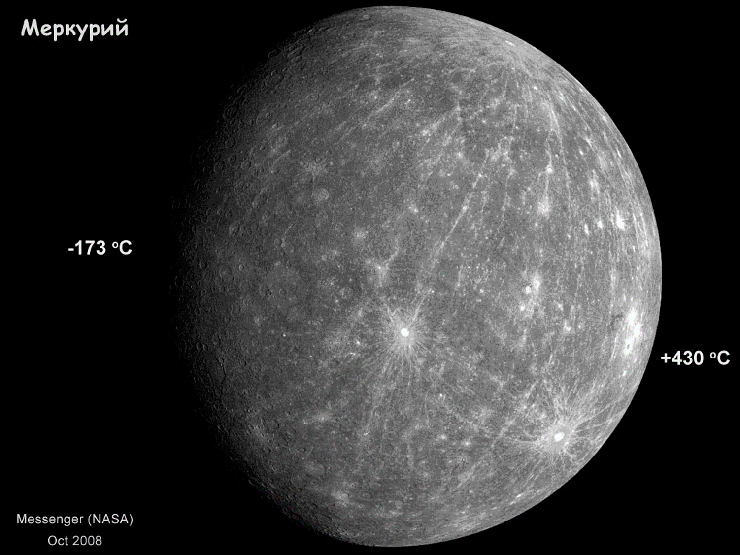
The surface of Mercury is almost indistinguishable from the moon. Even professional astronomers, when the first detailed pictures of Mercury appeared, showed them to each other and asked: “Well, guess, is it the Moon or Mercury?”. It's really hard to guess. And there, and there is a surface beaten by meteorites. But, of course, there are features. Although there are no large lava seas on Mercury, its surface is not uniform: there are older and younger regions (the basis for this is the count of meteorite craters). Mercury differs from the Moon in the presence of characteristic ledges and folds on the surface, resulting from the compression of the planet during the cooling of its huge metal core.
Temperature fluctuations on the surface of Mercury are greater than on the Moon. In the daytime at the equator 430 ° C, and at night -173 ° C. But the soil of Mercury serves as a good heat insulator, so at a depth of about 1 m, daily (or biennial?) temperature drops are no longer felt. So, if you fly to Mercury, then the first thing to do is to dig a dugout. It will be about 70 ° C at the equator; too hot. But in the region of the geographic poles in the dugout will be about -70 ° C. So it's easy to find one geographical latitude where you will be comfortable in the dugout.
The lowest temperatures are observed at the bottom of the polar craters, where the sun's rays never reach. It was there that deposits of water ice were discovered, which were previously found by radars from the Earth, and then confirmed by instruments of the MESSENGER space probe. The origin of this ice is still under discussion. Its sources can be both comets and water vapor emerging from the bowels of the planet.
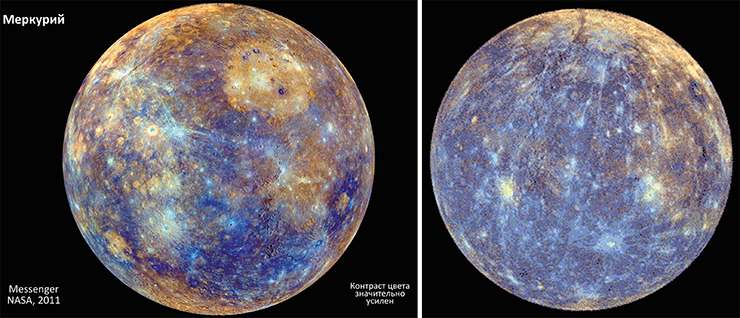
Mercury has one of the largest impact craters in the solar system - the Heat Plain ( Caloris Basin) with a diameter of 1550 km. This is a trace from the impact of an asteroid with a diameter of at least 100 km, which almost split the small planet. This happened about 3.8 billion years ago, during the period of the so-called "late heavy bombardment" ( Late Heavy Bombardment), when, for reasons that are not fully understood, the number of asteroids and comets in orbits crossing the orbits of the terrestrial planets increased.
When Mariner 10 photographed the Plain of Heat in 1974, we still did not know what happened on the opposite side of Mercury after this terrible impact. It is clear that if the ball is hit, then sound and surface waves are excited, which propagate symmetrically, pass through the "equator" and gather at the antipodal point, diametrically opposite to the point of impact. The disturbance there converges to a point, and the amplitude of seismic oscillations rapidly increases. It's like cattle drivers cracking their whip: the energy and momentum of the wave is practically conserved, and the thickness of the whip tends to zero, so the oscillation speed increases and becomes supersonic. It was expected that in the region of Mercury opposite the basin Caloris there will be a picture of incredible destruction. In general, it almost turned out that way: a vast hilly area with a corrugated surface was discovered there, although I expected that there would be an antipodal crater. It seemed to me that during the collapse of a seismic wave, a phenomenon “mirror” to the fall of an asteroid would occur. We observe this when a drop falls on a calm surface of water: first it creates a small depression, and then the water rushes back and throws a small new drop up. This did not happen on Mercury, and we now understand why. Its bowels turned out to be inhomogeneous and the exact focusing of the waves did not happen.
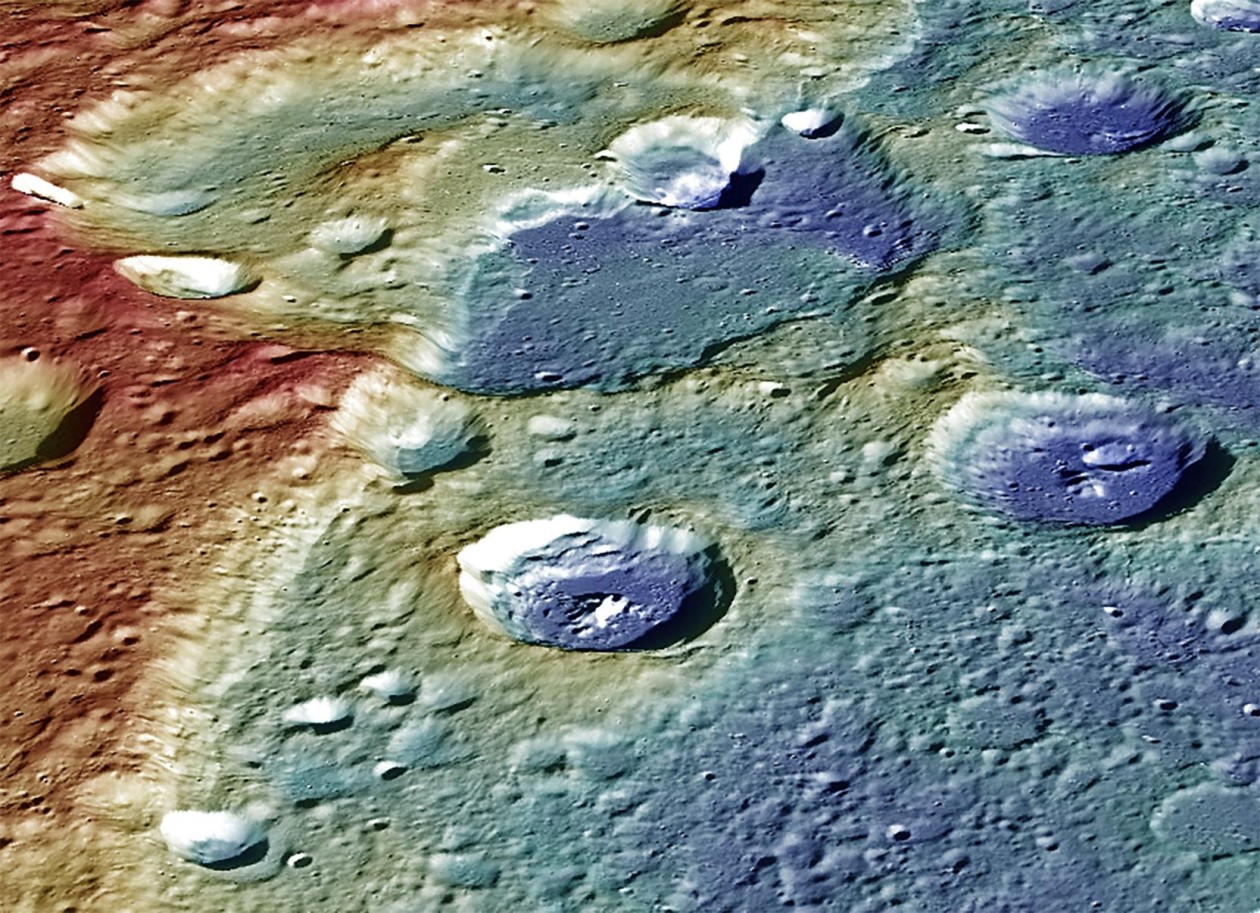

In general, the relief of Mercury is smoother than that of the Moon. For example, the walls of the Mercury craters are not so high. The likely reason for this is the greater gravity and warmer and softer interior of Mercury.
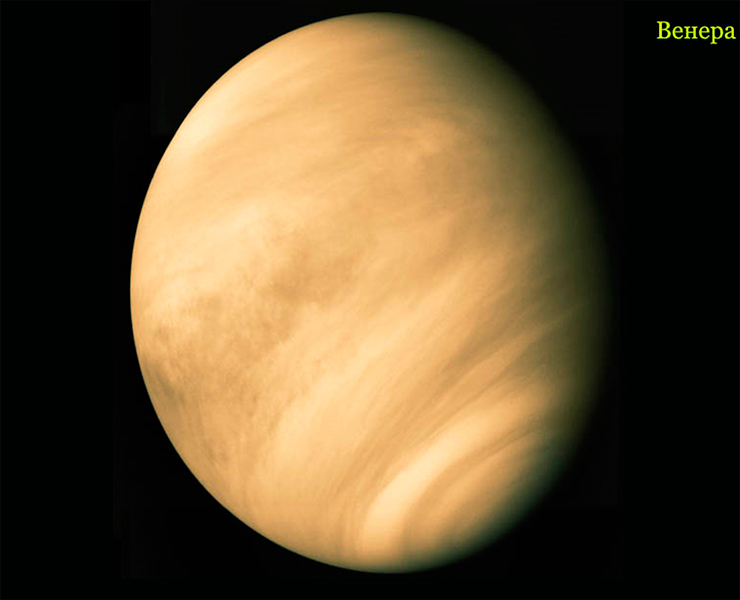
Venus- the second planet from the Sun and the most mysterious of the terrestrial planets. It is not clear what is the origin of its very dense atmosphere, almost entirely composed of carbon dioxide (96.5%) and nitrogen (3.5%) and causing a powerful greenhouse effect. It is not clear why Venus rotates so slowly around its axis - 244 times slower than the Earth, and also in the opposite direction. At the same time, the massive atmosphere of Venus, or rather, its cloudy layer, flies around the planet in four Earth days. This phenomenon is called superrotation of the atmosphere. At the same time, the atmosphere rubs against the surface of the planet and should have slowed down long ago. After all, it cannot move around the planet for a long time, solid which practically stands still. But the atmosphere rotates, and even in the direction opposite to the rotation of the planet itself. It is clear that the energy of the atmosphere dissipates from friction against the surface, and its angular momentum is transferred to the body of the planet. This means that there is an influx of energy (obviously - solar), due to which it works heat engine. Question: How is this machine implemented? How is the energy of the Sun transformed into the movement of the Venusian atmosphere?
Due to the slow rotation of Venus, the Coriolis forces on it are weaker than on Earth, so atmospheric cyclones are less compact there. In fact, there are only two of them: one in the northern hemisphere, the other in the southern. Each of them "winds" from the equator to its own pole.

The upper layers of the Venusian atmosphere were studied in detail by flyby (carrying out a gravitational maneuver) and orbital probes - American, Soviet, European and Japanese. For several decades, the Venera series vehicles were launched there by Soviet engineers, and this was our most successful breakthrough in the field of planetary exploration. The main task was to land a descent vehicle on the surface to see what was under the clouds.
The designers of the first probes, like the authors of science fiction works of those years, were guided by the results of optical and radio astronomical observations, from which it followed that Venus is a warmer analogue of our planet. That is why in the middle of the 20th century all science fiction writers, from Belyaev, Kazantsev and Strugatsky to Lem, Bradbury and Heinlein, imagined Venus as an inhospitable (hot, swampy, with a poisonous atmosphere), but in general, a world similar to Earth. For the same reason, the first landers of the Venusian probes were made not very strong, not able to resist great pressure. And they died, descending in the atmosphere, one by one. Then their cases began to be made stronger, designed for a pressure of 20 atmospheres. But even this was not enough. Then the designers, "biting the bit", made a titanium probe that can withstand a pressure of 180 atm. And he safely landed on the surface ("Venus-7", 1970). Note that not every submarine can withstand such pressure, which prevails at a depth of about 2 km in the ocean. It turned out that near the surface of Venus, the pressure does not drop below 92 atm (9.3 MPa, 93 bar), and the temperature is 464 ° C.
It was in 1970 that the dream of a hospitable Venus, similar to the Earth of the Carboniferous period, was finally put an end to. to the surface of Venus have become a routine operation, but it is not possible to work there for a long time: after 1-2 hours, the interior of the apparatus heats up, and the electronics fail.
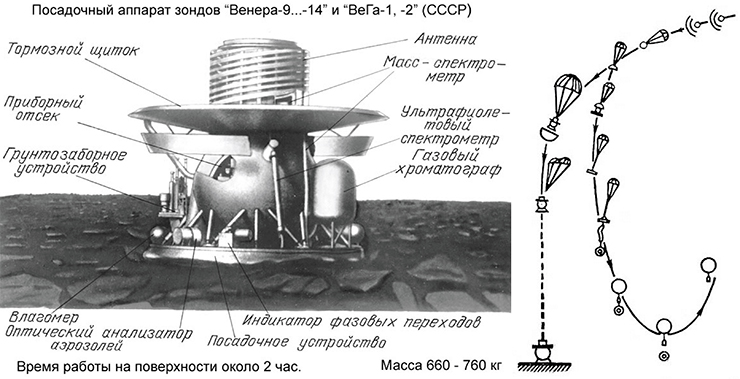
First artificial satellites appeared near Venus in 1975 ("Venus-9 and -10"). In general, the work on the surface of Venus of the Venera-9 ... -14 descent vehicles (1975-1981) turned out to be extremely successful, which studied both the atmosphere and the surface of the planet at the landing site, even managed to take soil samples and determine it chemical composition and mechanical properties. But the greatest effect among fans of astronomy and astronautics was caused by the photographic panoramas of the landing sites transmitted by them, first in black and white, and later in color. By the way, the Venusian sky, when viewed from the surface, is orange. Handsomely! Until now (2017), these images remain the only ones and are of great interest to planetary scientists. They continue to be processed and new parts are found on them from time to time.
American cosmonautics also made a significant contribution to the study of Venus in those years. Flying vehicles "Mariner-5 and -10" studied the upper layers of the atmosphere. Pioneer Venera 1 (1978) became the first American satellite of Venus and made radar measurements. And Pioneer-Venus-2 (1978) sent 4 descent vehicles into the atmosphere of the planet: one large (315 kg) with a parachute to the equatorial region of the daytime hemisphere and three small ones (90 kg each) without parachutes - to the middle latitudes and to north of the daytime hemisphere, as well as the nighttime hemisphere. None of them were designed to work on the surface, but one of the small vehicles landed safely (without a parachute!) And worked on the surface for more than an hour. This case allows you to feel how high the density of the atmosphere near the surface of Venus. The atmosphere of Venus is almost 100 times more massive than the Earth's atmosphere, and its density at the surface is 67 kg/m 3 , which is 55 times denser than Earth's air and only 15 times inferior to the density of liquid water.
It was quite difficult to create strong scientific probes that can withstand the pressure of the Venusian atmosphere, the same as at a kilometer depth in our oceans. But it was even more difficult to make them withstand the ambient temperature of 464 ° C in the presence of such dense air. The flow of heat through the case is colossal. Therefore, even the most reliable devices worked no more than two hours. In order to quickly descend to the surface and extend their work there, the Veneras dropped their parachute during landing and continued their descent, being braked only by a small shield on their hull. The impact on the surface was softened by a special damping device - the landing support. The design turned out to be so successful that Venera-9 sat down on a slope with an inclination of 35 ° without any problems and worked normally.
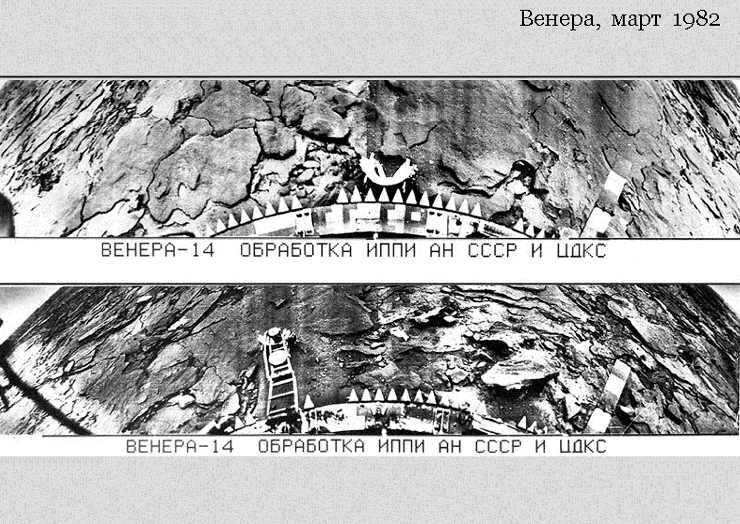
Given the high albedo of Venus and the colossal density of its atmosphere, scientists doubted that there would be enough sunlight near the surface to photograph. In addition, a dense fog could well hang at the bottom of the gas ocean of Venus, scattering sunlight and not allowing a contrast image to be obtained. Therefore, halogen mercury lamps were installed on the first landers to illuminate the soil and create light contrast. But it turned out that there is quite enough natural light there: it is light on Venus, like on a cloudy day on Earth. And the contrast in natural light is also quite acceptable.
In October 1975, the Venera-9 and -10 landers, through their orbital blocks, transmitted to Earth the first ever pictures of the surface of another planet (if we do not take the Moon into account). At first glance, the perspective in these panoramas looks strangely distorted due to the rotation of the shooting direction. These images were obtained with a telephotometer (optical-mechanical scanner), whose “look” slowly moved from the horizon under the feet of the lander and then to another horizon: a 180 ° sweep was obtained. Two telephotometers on opposite sides of the apparatus were supposed to give a complete panorama. But the covers on the lenses did not always open. For example, on "Venus-11 and -12" none of the four opened.
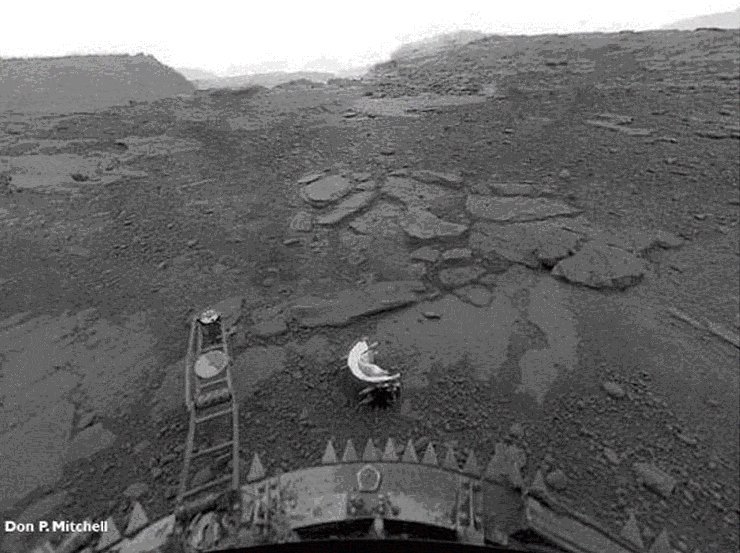
One of the most beautiful experiments on the study of Venus was carried out using the BeGa-1 and -2 probes (1985). Their name stands for "Venus-Halley", because after the separation of the descent vehicles directed to the surface of Venus, the flight parts of the probes went to explore the nucleus of Halley's comet and did it successfully for the first time. The landers were also not quite ordinary: the main part of the apparatus landed on the surface, and during the descent, a balloon made by French engineers separated from it, and flew for about two days in the atmosphere of Venus at an altitude of 53-55 km, transmitting data on temperature and pressure to Earth , illumination and visibility in clouds. Thanks to the powerful wind blowing at this height at a speed of 250 km/h, the balloons managed to fly around a significant part of the planet. Handsomely!
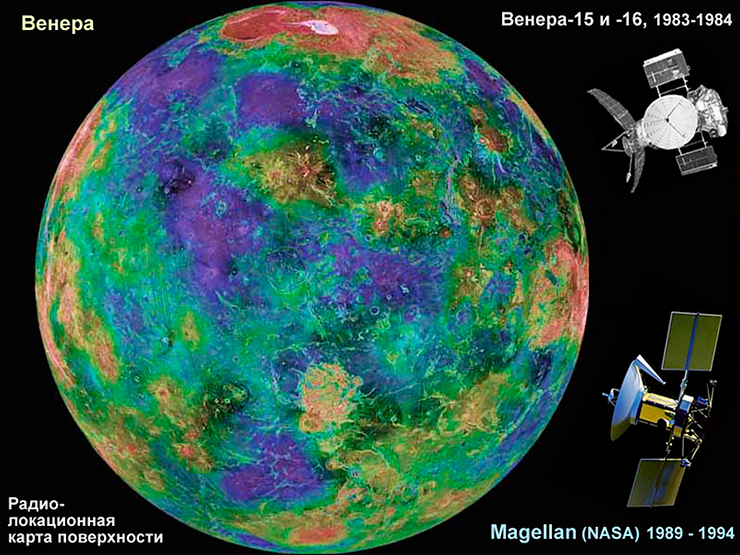
Photographs from the landing sites show only small areas of the Venusian surface. Is it possible to see all of Venus through the clouds? Can! The radar sees through the clouds. Two flew to Venus Soviet satellite with side-scan radars and one American. Based on their observations, very high resolution radio maps of Venus were compiled. It is difficult to demonstrate it on a general map, but it is clearly visible on separate fragments of the map. Levels are shown in color on radio maps: blue and blue are lowlands; if there was water on Venus, it would be oceans. But liquid water cannot exist on Venus. Yes and gaseous water there is also almost none. Greenish and yellowish are the continents, let's call them that. Red and white are the highest points on Venus. This is "Venusian Tibet" - the highest plateau. The highest peak on it - Mount Maxwell - rises to 11 km.
![]()
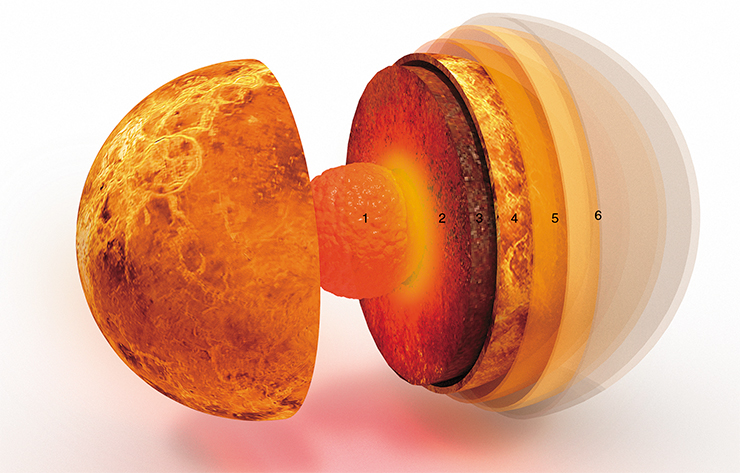
There are no reliable facts about the bowels of Venus, about its internal structure, since seismic studies have not yet been carried out there. In addition, the slow rotation of the planet does not allow measuring its moment of inertia, which could tell about the distribution of density with depth. So far, theoretical ideas are based on the similarity of Venus with the Earth, and the apparent absence of plate tectonics on Venus is explained by the absence of water on it, which serves as a “lubricant” on Earth, allowing the plates to slide and dive under each other. Together with the high surface temperature, this leads to a slowdown or even complete absence of convection in the body of Venus, reduces the rate of cooling of its interior and may explain the lack of a magnetic field in it. All this looks logical, but requires experimental verification.
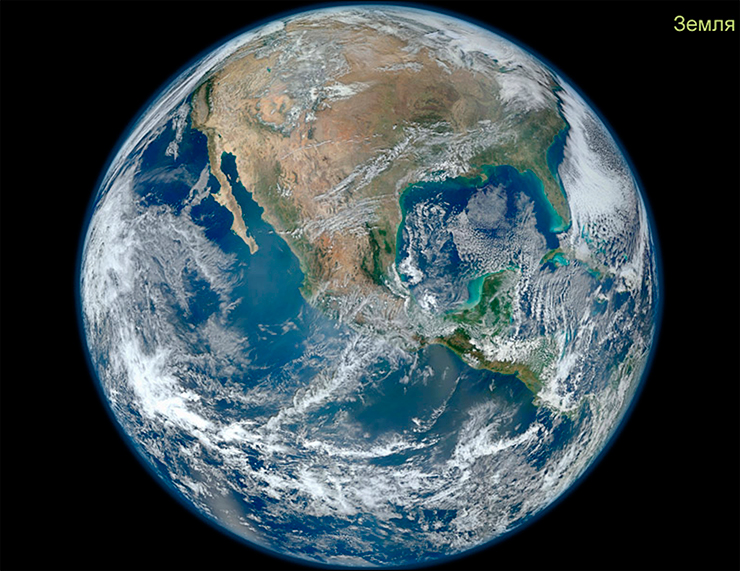
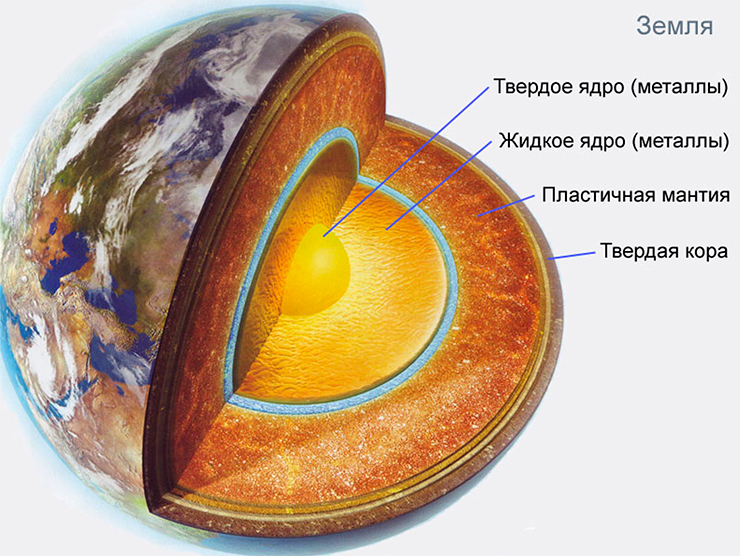
By the way, oh Earth. I will not discuss in detail the third planet from the Sun, since I am not a geologist. Moreover, each of us has general idea about the Earth even on the basis of school knowledge. But in connection with the study of other planets, I note that the bowels of our planet are also not completely clear to us. Almost every year there are major discoveries in geology, sometimes even new layers are discovered in the bowels of the Earth. We don't even know exactly the temperature at the core of our planet. Look at recent reviews: some authors believe that the temperature at the boundary of the inner core is about 5000 K, and others - that it is more than 6300 K. These are the results of theoretical calculations, which include not quite reliable parameters that describe the properties of matter at a temperature of thousands of kelvins and a pressure of million bar. Until these properties are reliably studied in the laboratory, we will not receive accurate knowledge about the bowels of the Earth.
The uniqueness of the Earth among planets similar to it lies in the presence of a magnetic field and liquid water on the surface, and the second, apparently, is a consequence of the first: the Earth's magnetosphere protects our atmosphere and, indirectly, the hydrosphere from solar wind flows. To generate a magnetic field, as it now appears, there must be a liquid electrically conductive layer in the bowels of the planet, covered by convective motion, and a fast daily rotation that provides the Coriolis force. Only under these conditions, the dynamo mechanism is activated, which amplifies the magnetic field. Venus barely rotates, so it has no magnetic field. The iron core of little Mars has long cooled and hardened, so it is also devoid of a magnetic field. Mercury, it would seem, rotates very slowly and should have cooled down before Mars, but it has a quite tangible dipole magnetic field with a strength of 100 times weaker than the earth's. Paradox! The tidal influence of the Sun is now considered responsible for maintaining the iron core of Mercury in a molten state. Billions of years will pass, the iron core of the Earth will cool down and harden, depriving our planet of magnetic protection from the solar wind. And the only solid planet with a magnetic field will remain - oddly enough - Mercury.
Now let's turn to Mars. His appearance immediately attracts us for two reasons: even in photographs taken from afar, white polar caps and a translucent atmosphere are visible. This is related to Mars with the Earth: the polar caps give rise to the idea of the presence of water, and the atmosphere - of the possibility of breathing. And although on Mars with water and air not everything is as safe as it seems at first glance, this planet has long attracted researchers.
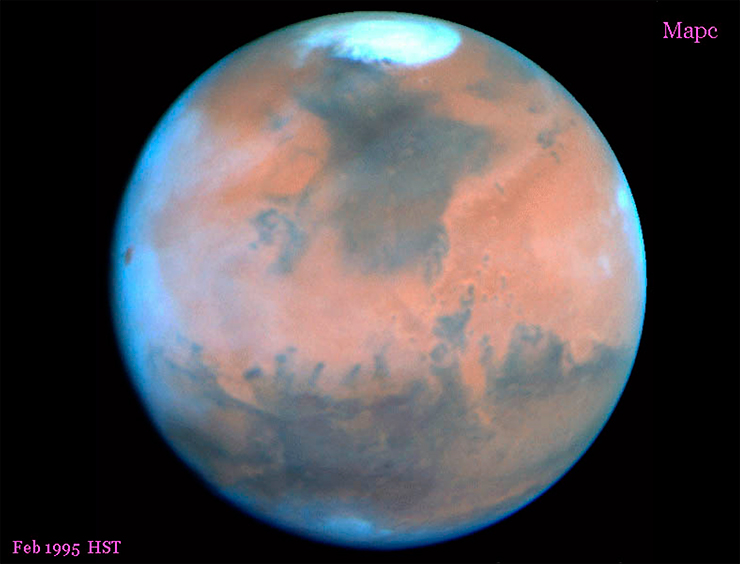
In the past, astronomers used to study Mars through a telescope and therefore looked forward to moments called “Mars oppositions.” What is opposed to what in these moments?
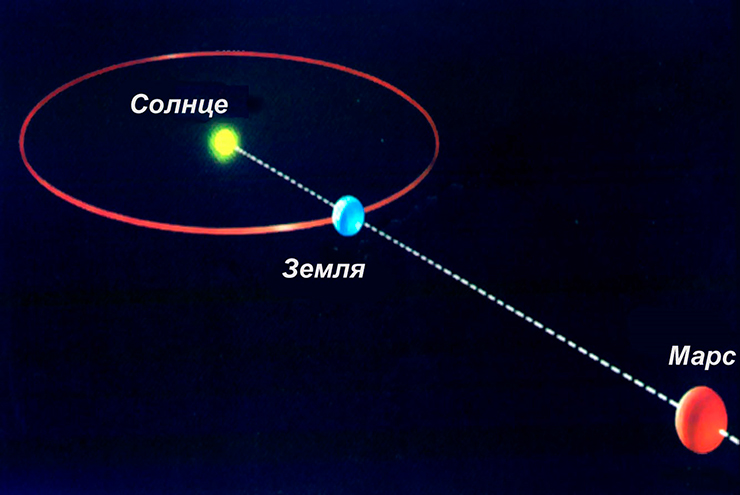

From the point of view of an earthly observer, at the moment of opposition, Mars is on one side of the Earth, and the Sun is on the other. It is clear that it is at these moments that the Earth and Mars approach at a minimum distance, Mars is visible in the sky all night and is well illuminated by the Sun. The Earth makes its revolution around the Sun in a year, and Mars in 1.88 years, so the average time interval between oppositions takes a little more than two years. The last opposition of Mars was in 2016, however, it was not particularly close. The orbit of Mars is noticeably elliptical, so the closest approaches to the Earth occur when Mars is in the region of the perihelion of its orbit. On Earth (in our era) it is the end of August. Therefore, the August and September confrontations are called "great"; at these moments, coming every 15-17 years, our planets approach each other by less than 60 million km. This will happen in 2018. A super-close confrontation took place in 2003: then Mars was only 55.8 million km away. In this regard, a new term was born - "the greatest oppositions of Mars": these are now considered approaches of less than 56 million km. They occur 1-2 times per century, but in the current century there will be even three of them - wait for 2050 and 2082.

But even during the moments of great confrontations, little can be seen on Mars through a telescope from Earth. Here is a drawing of an astronomer looking at Mars through a telescope. An unprepared person will look and be disappointed - he will see nothing at all, only a small pink “droplet”. But in the same telescope, the experienced eye of an astronomer sees more. Astronomers have long noticed the polar cap, centuries ago. As well as dark and light areas. The dark ones were traditionally called seas, and the light ones - continents.
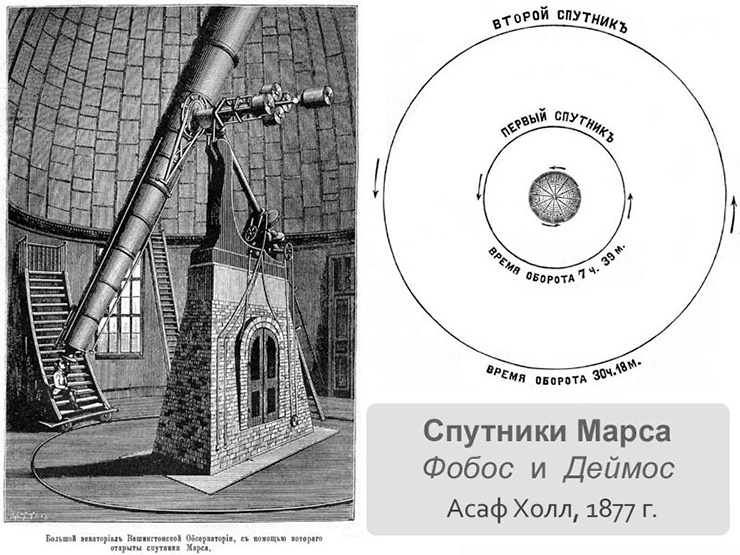
An increased interest in Mars arose during the era of the great opposition of 1877: by that time good telescopes had already been built, and astronomers had made several important discoveries. American astronomer Asaph Hall discovered the moons of Mars - Phobos and Deimos. And the Italian astronomer Giovanni Schiaparelli drew mysterious lines on the surface of the planet - the Martian channels. Of course, Schiaparelli was not the first to see the canals: some of them noticed before him (for example, Angelo Secchi). But after Schiaparelli, this topic became dominant in the study of Mars for many years.
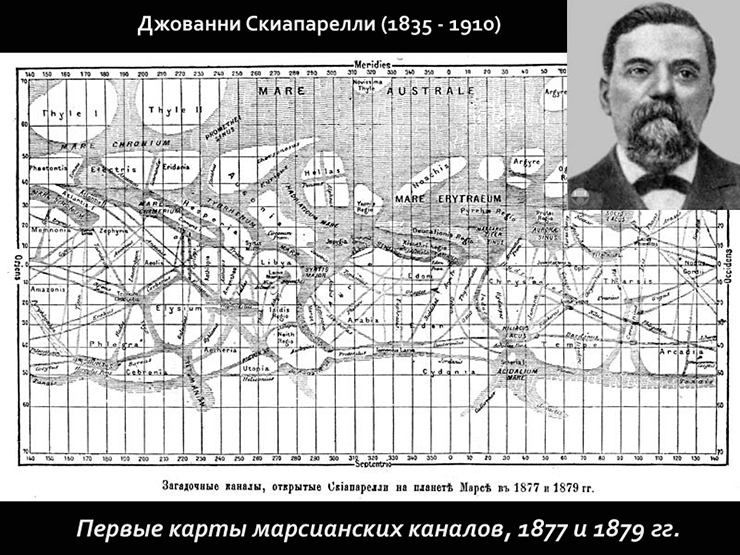
Observations of the details of the surface of Mars, such as "channels" and "seas", marked the beginning of a new stage in the study of this planet. Schiaparelli believed that the "seas" of Mars could indeed be bodies of water. Since the lines connecting them had to be given a name, Schiaparelli called them "canals" (canali), meaning by this the straits of the sea, and by no means man-made structures. He believed that water actually flows through these channels in the polar regions during the melting of the polar caps. After the discovery of "channels" on Mars, some scientists suggested their artificial nature, which served as the basis for hypotheses about the existence of intelligent beings on Mars. But Schiaparelli himself did not consider this hypothesis scientifically substantiated, although he did not exclude the existence of life on Mars, perhaps even intelligent.
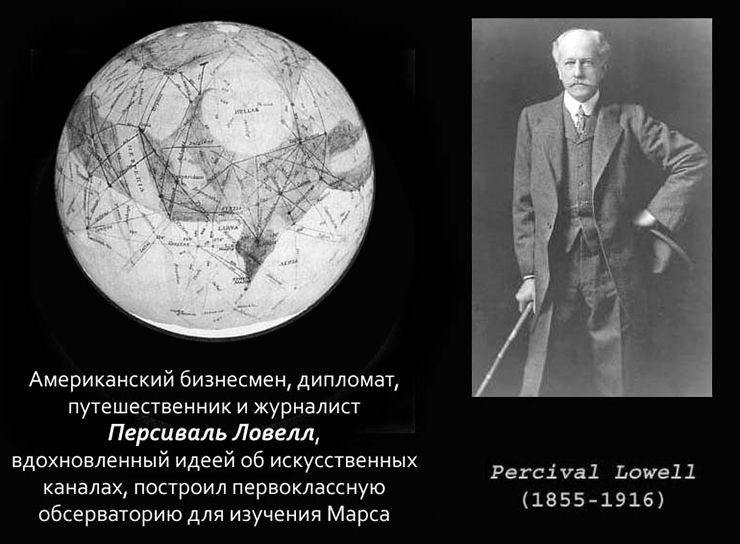
However, the idea of an artificial system of irrigation canals on Mars began to gain ground in other countries. This was partly due to the fact that the Italian canali was presented in English as canal (man-made waterway), and not as a channel (natural sea strait). Yes, and in Russian the word "channel" means an artificial structure. The idea of Martians then captivated many, and not only writers (remember HG Wells with his "War of the Worlds", 1897), but also researchers. The most famous of them was Percival Lovell. This American received an excellent education at Harvard, equally mastering mathematics, astronomy and the humanities. But as the offspring of a noble family, he would rather become a diplomat, writer or traveler than an astronomer. However, after reading Schiaparelli's works on canals, he became interested in Mars and believed in the existence of life and civilization on it. In general, he abandoned all other business and began to study the Red Planet.
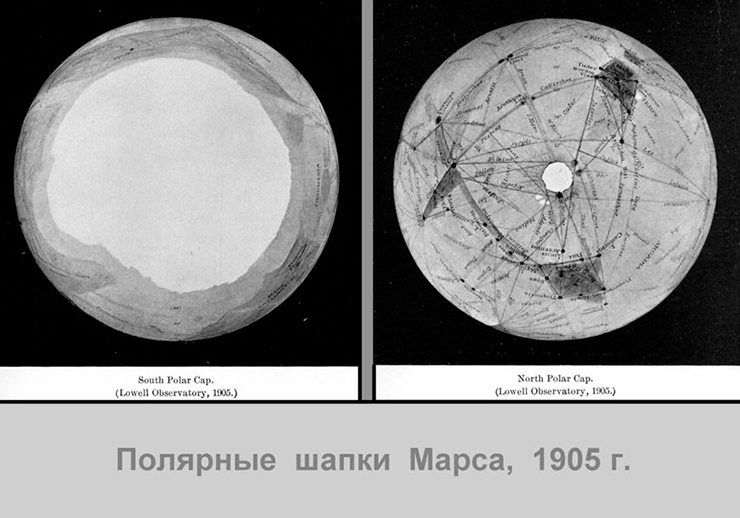
With money from his wealthy family, Lovell built an observatory and began painting canals. Note that photography was then in its infancy, and the eye of an experienced observer is able to notice the smallest details in conditions of atmospheric turbulence, which distorts images of distant objects. The maps of the Martian channels created at the Lovell Observatory were the most detailed. In addition, being a good writer, Lovell wrote some of the most entertaining books - Mars and its canals (1906), Mars as the Abode of Life(1908) and others. Only one of them was translated into Russian before the revolution: "Mars and life on it" (Odessa: Matezis, 1912). These books captivated an entire generation with the hope of meeting the Martians.
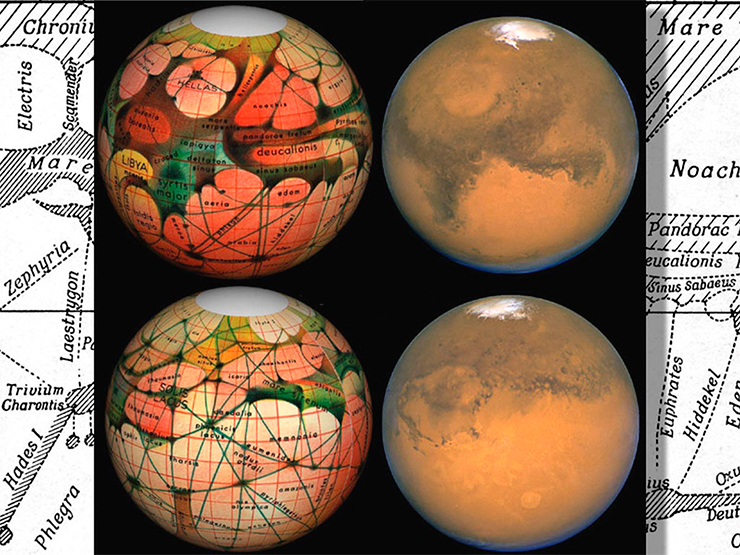
It should be recognized that the story of the Martian channels has not received an exhaustive explanation. There are old drawings with canals and modern photographs without them. Where are the channels? What was it? An astronomer's conspiracy? Mass insanity? Self-hypnosis? It is difficult to reproach scientists who gave their lives to science for this. Perhaps the answer to this story lies ahead of us.

And today we study Mars, as a rule, not through a telescope, but with the help of interplanetary probes. (Although telescopes are still used for this and sometimes bring important results.) The flight of probes to Mars is carried out along the most energetically favorable semi-elliptical trajectory. Using Kepler's Third Law, it is easy to calculate the duration of such a flight. Due to the large eccentricity of the Martian orbit, the flight time depends on the launch season. On average, a flight from Earth to Mars lasts 8-9 months.

Can a manned mission be sent to Mars? This is a big and interesting topic. It would seem that all that is needed for this is a powerful launch vehicle and a comfortable spacecraft. No one has powerful enough carriers yet, but American, Russian and Chinese engineers are working on them. There is no doubt that such a rocket will be created in the coming years by state-owned enterprises (for example, our new Angara rocket in its most powerful version) or private companies (Elon Musk - why not).
Is there a ship in which astronauts will spend many months on their way to Mars? So far there is no such thing. All existing (Soyuz, Shenzhou) and even those undergoing tests (Dragon V2, CST-100, Orion) are very cramped and suitable only for a flight to the Moon, where it is only 3 days away. True, there is an idea to inflate additional rooms after takeoff. In the fall of 2016, the inflatable module was tested on the ISS and performed well. Thus, the technical possibility of a flight to Mars will soon appear. So what's the problem? In a man!

We are constantly exposed to the natural radioactivity of terrestrial rocks, streams of cosmic particles or artificially created radioactivity. At the Earth's surface, the background is weak: we are protected by the planet's magnetosphere and atmosphere, as well as its body, covering the lower hemisphere. In low Earth orbit, where the ISS astronauts work, the atmosphere no longer helps, so radiation background increases hundreds of times. AT open space it is several times higher. This significantly limits the duration of a person's safe stay in space. It should be noted that workers in the nuclear industry are prohibited from receiving more than 5 rem per year - this is almost safe for health. Astronauts are allowed to receive up to 10 rems per year (an acceptable level of danger), which limits the duration of their work on the ISS to one year. And a flight to Mars with a return to Earth in the best case (if there are no powerful flares on the Sun) will lead to a dose of 80 rem, which will create a high probability of oncological disease. This is precisely the main obstacle to the flight of man to Mars. Can astronauts be protected from radiation? Theoretically, it is possible.

We on Earth are protected by an atmosphere whose thickness, in terms of the amount of matter per square centimeter, is equivalent to a 10-meter layer of water. Light atoms dissipate the energy of cosmic particles better, so the protective layer of a spacecraft can be 5 meters thick. But even in a cramped ship, the mass of this protection will be measured in hundreds of tons. Sending such a ship to Mars is beyond the power of a modern and even promising rocket.

OK then. Suppose there were volunteers who were ready to risk their health and go to Mars in one direction without radiation protection. Will they be able to work there after landing? Can they be expected to complete the task? Remember how astronauts, after spending half a year on the ISS, feel right after landing on the ground? They are carried out on their hands, put on a stretcher, and for two or three weeks they are rehabilitated, restoring bone strength and muscle strength. And on Mars, no one can carry them on their hands. There you will need to go out on your own and work in heavy void suits, like on the moon. After all, the pressure of the atmosphere on Mars is almost zero. The suit is very heavy. On the Moon, it was relatively easy to move in it, since the gravity there is 1/6 of the Earth's, and during the three days of flight to the Moon, the muscles do not have time to weaken. Astronauts will arrive on Mars after spending many months in conditions of weightlessness and radiation, and the gravity on Mars is two and a half times that of the moon. In addition, on the very surface of Mars, the radiation is almost the same as in outer space: Mars does not have a magnetic field, and its atmosphere is too rarefied to serve as protection. So the movie "The Martian" is a fantasy, very beautiful, but unrealistic.
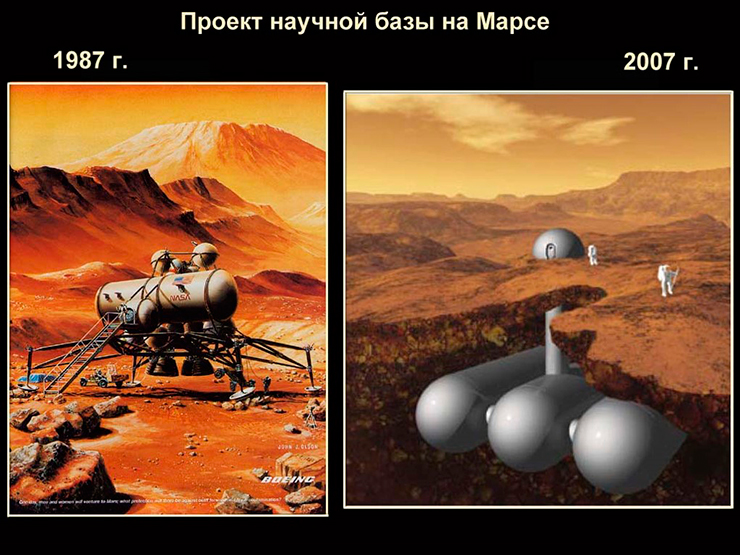
How did we imagine the Martian base before? We arrived, put laboratory modules on the surface, we live and work in them. And now here's how: we flew in, dug in, built shelters at a depth of at least 2-3 meters (this is a fairly reliable protection against radiation) and try to go to the surface less often and not for a long time. Egresses to the surface are episodic. We mostly sit underground and control the work of the rovers. So they can be controlled from the Earth, even more efficiently, cheaper and without health risks. Which has been done for several decades.
About what robots have learned about Mars -.
Illustrations prepared by V. G. Surdin and N. L. Vasilyeva using NASA photos and images from public sites
Closest to the Sun is the terrestrial group of planets. It consists of metal or silicate rock, so such a planet is called rocky or telluric. The earth planet is inside the solar system. Such a planet is called terrestrial, because in its composition there are elements resembling the planet Earth. And even the name she received the Latin " Terra "- means "earth" in translation.
If the gas giant planets consist of various types of water, helium and hydrogen, which can turn into various physical states, then the terrestrial groups of planets have an exceptionally solid surface. These planets are included in the same group due to the similarity of their structure: inside they have a metal core, which is iron, and this core is surrounded by a special silicate mantle. And also these planets are combined into one group, since each of them has terrestrial components, which include volcanoes, mountains, canyons and others.
The terrestrial group of planets has an uncompressed density equal to zero pressure of the average density of matter of any planet. But since compression can increase its density in planetary cores, the real average density and uncompressed density can differ. Scientists determine the average density for each terrestrial planet separately, because the calculation of density depends on the size and on what is included in its composition.
There is no way to know how many terrestrial planets actually existed when the solar system was just beginning to form. Perhaps they were expelled from the four planets, or united (connected) with each other. The planetary nebula reorganized itself, and there were four such planets - Mars, Mercury, Venus, and of course, the Earth itself.
Features of terrestrial planets
Mars
This planet is like half of the Earth and the fourth from the sun. It has almost no atmosphere, only carbon dioxide, and it is the coldest (from 00 degrees to minus 113C). A day on Mars is identical to Earth, but a year is longer - 687 days. There are no liquids on Mars, there are ice caps of gas and water in a frozen state. Mars is famous for volcanoes, craters and two satellites - Deimos and Phobos.
Mercury
It is closest to the Sun and the smallest of the four. She is slightly larger than the moon. The surface of Mercury is littered with impact craters that have left traces on it. This happened due to the absence (or presence to a small extent) of the atmosphere. The temperature on Mercury is off scale, the spread is huge from 4270 to minus 173C. This distinguishes it from other planets. The temperature range increases / decreases depending on the location to the sun (high on the facing side, low on the non-facing side). You can go around the sun in 88 days. This is possible due to its very close location (46 million kilometers). It is curious that the planet is very slow and one day there is equal to 59 Earth days.
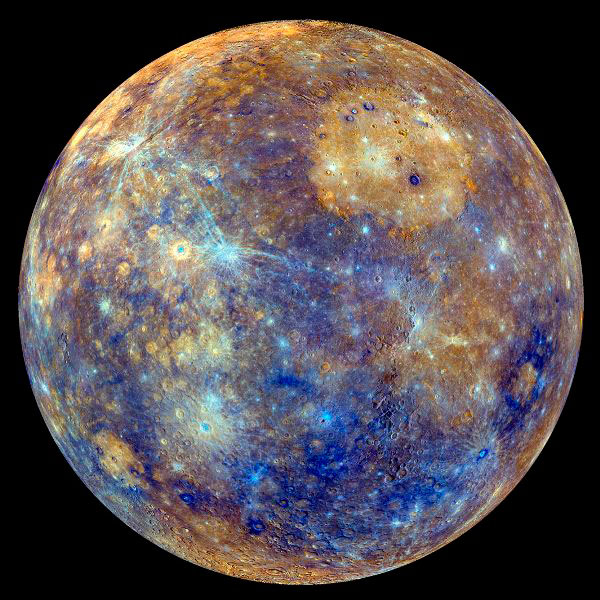
Venus
This planet is almost an analogue of the Earth (density, size, structure). There is present sulphuric acid represented in clouds, and carbon dioxide. Although Venus is not close to the Sun, unlike Mercury, it is the hottest (4500C). Venus is famous for its retrograde rotation: the west - the sun rises, the east - sets. A day on Venus is very long and consists of 243 Earth days. A year is 225 days long. Venus is beautiful and brightly presents herself, I appear in the form of the Morning Star.
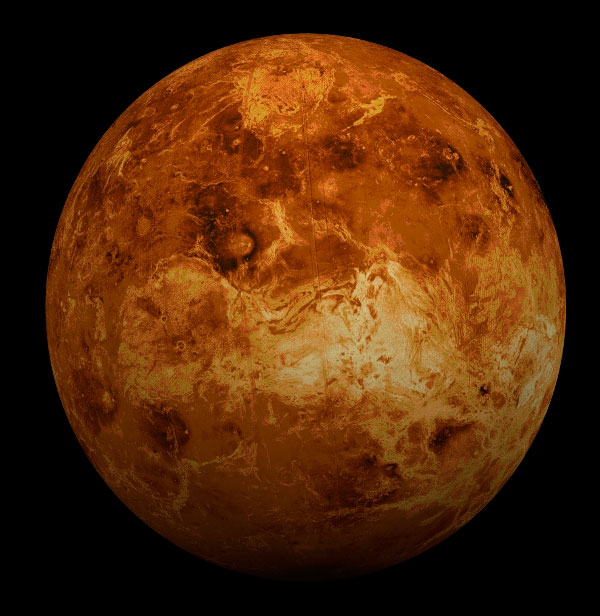
Earth
It is only the fifth largest planetary nebula in the solar system and the third largest from the Sun itself. Among all the planets, it is the only inhabited one. Possessing liquid state water, she gave birth to life. We breathe air that is only 28 percent oxygen, the rest is nitrogen and 1 percent argon and carbon dioxide. The habitable planet changes seasons due to its vertical inclination of 23 degrees. A year is 365 days and a day is 24 hours.
Introduction
Among the numerous celestial bodies studied by modern astronomy, the planets occupy a special place. After all, we all know very well that the Earth on which we live is a planet, so the planets are bodies, basically similar to our Earth.
But in the world of planets, we will not even meet two that are completely similar to each other. The variety of physical conditions on the planets is very great. The distance of the planet from the Sun (and hence the amount of solar heat and surface temperature), its size, gravity stress on the surface, the orientation of the axis of rotation, which determines the change of seasons, the presence and composition of the atmosphere, the internal structure and many other properties are different for everyone nine planets in the solar system.
Speaking about the diversity of conditions on the planets, we can better understand the laws of their development and find out their relationship between certain properties of the planets. So, for example, its ability to hold an atmosphere of one composition or another depends on the size, mass and temperature of the planet, and the presence of the atmosphere, in turn, affects the thermal regime of the planet.
As the study of the conditions under which the origin and further development of living matter is possible shows, only on the planets can we look for signs of the existence of organic life. That is why the study of the planets, in addition to general interest, has great importance in terms of space biology.
The study of the planets is of great importance, in addition to astronomy, for other areas of science, primarily the Earth sciences - geology and geophysics, as well as for cosmogony - the science of the origin and development of celestial bodies, including our Earth.
The terrestrial planets include the planets: Mercury, Venus, Earth and Mars.
Mercury.
General information.
Mercury is the closest planet to the Sun in the solar system. The average distance from Mercury to the Sun is only 58 million km. Among the large planets, it has the smallest dimensions: its diameter is 4865 km (0.38 of the diameter of the Earth), its mass is 3.304 * 10 23 kg (0.055 of the mass of the Earth or 1: 6025000 of the mass of the Sun); average density 5.52 g/cm 3 . Mercury is a bright star, but it is not so easy to see it in the sky. The fact is that, being near the Sun, Mercury is always visible to us not far from the solar disk, moving away from it either to the left (to the east), then to the right (to the west) only a short distance, which does not exceed 28 O. Therefore, it can be to see only in those days of the year when it departs from the Sun at its most long distance. Let, for example, Mercury moved away from the Sun to the left. The sun and all the luminaries in their daily movement float across the sky from left to right. Therefore, the Sun sets first, and after a little over an hour Mercury sets, and we must look for this planet low above the Western horizon.
Traffic.
Mercury moves around the Sun at an average distance of 0.384 astronomical units (58 million km) in an elliptical orbit with a large eccentricity e-0.206; at perihelion, the distance to the Sun is 46 million km, and at aphelion, 70 million km. The planet makes a complete flight around the Sun in three Earth months or 88 days at a speed of 47.9 km / s. Moving along its path around the Sun, Mercury at the same time rotates around its axis so that one and the same half of it always faces the Sun. This means that it is always day on one side of Mercury and night on the other. In the 60s. using radar observations, it was found that Mercury rotates around its axis in forward direction(i.e., as in orbital motion) with a period of 58.65 days (relative to the stars). The length of a solar day on Mercury is 176 days. The equator is inclined to the plane of its orbit by 7°. The angular velocity of the axial rotation of Mercury is 3/2 of the orbital and corresponds to the angular velocity of its movement in orbit when the planet is at perihelion. Based on this, it can be assumed that the speed of rotation of Mercury is due to tidal forces from the Sun.
Atmosphere.
Mercury is possibly devoid of an atmosphere, although polarization and spectral observations indicate the presence of a faint atmosphere. With the help of Mariner-10, the presence of a highly rarefied gaseous envelope near Mercury, consisting mainly of helium, was established. This atmosphere is in dynamic equilibrium: each helium atom stays in it for about 200 days, after which it leaves the planet, and another particle from the solar wind plasma takes its place. In addition to helium, an insignificant amount of hydrogen has been found in the atmosphere of Mercury. It is about 50 times smaller than helium.
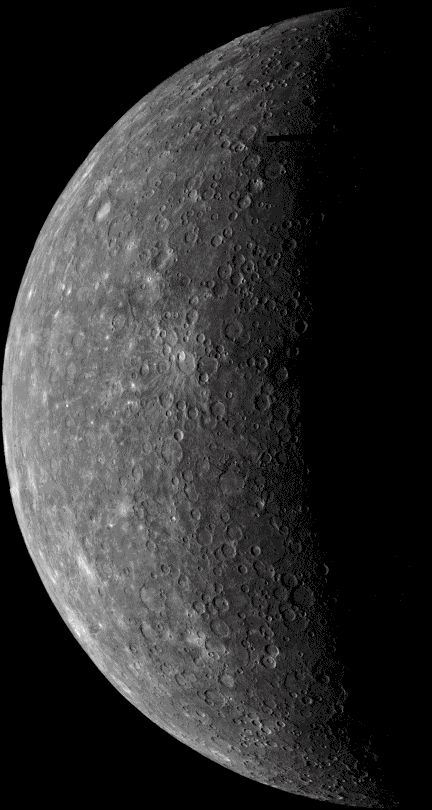 It also turned out that Mercury has a weak magnetic field, the strength of which is only 0.7% of the earth's. The inclination of the dipole axis to the axis of rotation of Mercury is 12 0 (earth is 11 0)
It also turned out that Mercury has a weak magnetic field, the strength of which is only 0.7% of the earth's. The inclination of the dipole axis to the axis of rotation of Mercury is 12 0 (earth is 11 0)
The pressure at the surface of the planet is approximately 500 billion times less than that at the surface of the Earth.
Temperature.
Mercury is much closer to the Sun than Earth. Therefore, the Sun on it shines and warms 7 times stronger than ours. On the day side of Mercury, it is terribly hot, there is eternal hell. Measurements show that the temperature there rises to 400 O above zero. But on the night side there should always be a strong frost, which probably reaches 200 O and even 250 O below zero. It turns out that one half of it is a hot stone desert, and the other half is an icy desert, perhaps covered with frozen gases.
Surface.
 From the flyby trajectory of the Mariner 10 spacecraft in 1974, more than 40% of the surface of Mercury was photographed with a resolution from 4 mm to 100 m, which made it possible to see Mercury in much the same way as the Moon in the dark from the Earth. The abundance of craters is the most obvious feature of its surface, which at first glance can be likened to the moon.
From the flyby trajectory of the Mariner 10 spacecraft in 1974, more than 40% of the surface of Mercury was photographed with a resolution from 4 mm to 100 m, which made it possible to see Mercury in much the same way as the Moon in the dark from the Earth. The abundance of craters is the most obvious feature of its surface, which at first glance can be likened to the moon.
Indeed, the morphology of the craters is close to that of the moon, and their impact origin is beyond doubt: in most of them, traces of ejections of material crushed upon impact are visible with the formation in some cases of characteristic bright rays and a field of secondary craters. Many craters have a central mound and a terraced structure of the inner slope. Interestingly, not only almost all large craters with a diameter of more than 40-70 km have such features, but also significantly more smaller craters, within 5-70 km (of course, we are talking about well-preserved craters). These features can be attributed both to the greater kinetic energy of the bodies falling onto the surface and to the surface material itself.
The degree of erosion and smoothing of craters is different. In general, Mercury craters are less deep than lunar craters, which can also be explained by the greater kinetic energy of meteorites due to the greater acceleration of gravity on Mercury than on the Moon. Therefore, the impact crater is more efficiently filled with ejected material. For the same reason, secondary craters are located closer to the central one than on the Moon, and deposits of crushed material mask the primary landforms to a lesser extent. The secondary craters themselves are deeper than the lunar ones, which is again explained by the fact that fragments falling to the surface experience a greater acceleration of gravity.
Just as on the Moon, it is possible, depending on the relief, to distinguish predominantly uneven “continental” and much smoother “marine” regions. The latter are mainly hollows, which, however, are much smaller than on the Moon, their sizes usually do not exceed 400-600 km. In addition, some basins are hardly distinguishable against the background of the surrounding relief. The exception is the mentioned vast basin Kanoris (Sea of Heat) with a length of about 1300 km, reminiscent of the well-known Sea of Rains on the Moon.
In the predominant continental part of the surface of Mercury, one can distinguish both heavily cratered areas, with the highest degree of degradation of craters, and old intercrater plateaus occupying vast territories, indicating a widely developed ancient volcanism. These are the most ancient surviving landforms of the planet. The leveled surfaces of the basins are obviously covered with the thickest layer of crushed rocks - regolith. Along with a small number of craters, there are folded ridges resembling those of the moon. Some of the flat areas adjacent to the basins were probably formed during the deposition of material ejected from them. At the same time, quite definite evidence of their volcanic origin was found for most of the plains, but this is volcanism of a later time than on the intercrater plateaus. A careful study reveals another interesting feature that sheds light on the history of the formation of the planet. We are talking about characteristic traces of tectonic activity on a global scale in the form of specific steep ledges, or escarp slopes. Escarps have a length of 20-500 km and a height of slopes from several hundred meters to 1-2 km. In their morphology and geometry of location on the surface, they differ from the usual tectonic ruptures and faults observed on the Moon and Mars, and rather formed due to thrusts, stratifications due to stress in the surface layer that arose during the compression of Mercury. This is evidenced by the horizontal displacement of the ridges of some craters.
Some of the scarps were bombarded and partially destroyed. This means that they formed earlier than the craters on their surface. From the narrowing of the erosion of these craters, it can be concluded that the crustal compression occurred during the formation of the “seas” about 4 billion years ago. The most probable reason for the contraction must, apparently, be considered the beginning of the cooling of Mercury. According to another interesting assumption put forward by a number of experts, an alternative mechanism for the powerful tectonic activity of the planet during this period could be a tidal slowdown of the planet's rotation by about 175 times: from the originally estimated value of about 8 hours to 58.6 days.

Venus.
General information.
Venus is the second closest planet to the Sun, almost the same size as the Earth, and its mass is more than 80% of the Earth's mass. For these reasons, Venus is sometimes referred to as Earth's twin or sister. However, the surface and atmosphere of these two planets are completely different. The Earth has rivers, lakes, oceans and the atmosphere we breathe. Venus is a scalding hot planet with a dense atmosphere that would be fatal to humans. The average distance from Venus to the Sun is 108.2 million km; it is practically constant, since the orbit of Venus is closer to a circle than our planet. Venus receives from the Sun at two s once again more light and heat than Earth. However, on the shadow side, Venus is dominated by a frost of more than 20 degrees below zero, since the sun's rays do not fall here for a very long time. The planet has a very dense, deep and very cloudy atmosphere, preventing us from seeing the surface of the planet. The atmosphere (gas shell) was discovered by M. V. Lomonosov in 1761, which also showed the similarity of Venus with the Earth. The planet has no satellites.
Traffic.
Venus has an almost circular orbit (eccentricity 0.007), which it bypasses in 224.7 Earth days at a speed of 35 km/sec. at a distance of 108.2 million km from the Sun. Venus rotates around its axis in 243 Earth days - the maximum time among all the planets. Venus rotates around its axis in the opposite direction, that is, in the opposite direction to its orbit. This slow and reverse rotation means that, as seen from Venus, the Sun rises and sets only twice a year, since a Venusian day is equal to 117 Earth days. The axis of rotation of Venus is almost perpendicular to the orbital plane (tilt 3 °), so there are no seasons of the year - one day is similar to another, has the same duration and the same weather. This weather uniformity is further enhanced by the specificity of the Venusian atmosphere - its strong greenhouse effect. Also, Venus, like the Moon, has its own phases.
Temperature.
The temperature is about 750 K over the entire surface both day and night. The reason for such a high temperature near the surface of Venus is the greenhouse effect: the sun's rays relatively easily pass through the clouds of its atmosphere and heat the surface of the planet, but the thermal infrared radiation of the surface itself escapes through the atmosphere back into space with great difficulty. On Earth, where the amount of carbon dioxide in the atmosphere is low, the natural greenhouse effect raises the global temperature by 30°C, while on Venus it raises the temperature by another 400°C. By studying the physical consequences of the strongest greenhouse effect on Venus, we have a good idea of the results that the accumulation of excess heat on Earth, caused by the growing concentration of carbon dioxide in the atmosphere due to the burning of fossil fuels - coal and oil, can lead to.
In 1970, the first spacecraft to land on Venus could only endure the sweltering heat for about one hour, but that was just enough time to send back data on surface conditions.
Atmosphere.
 The enigmatic atmosphere of Venus has been the centerpiece of the robotic exploration program for the past two decades. The most important aspects of her research were the chemical composition, vertical structure and dynamics of the air environment. Much attention was paid to the cloud cover, which plays the role of an insurmountable barrier to the penetration of optical electromagnetic waves into the atmosphere. When filming Venus on television, it was possible to obtain an image of only the cloud cover. The extraordinary dryness of the air and its phenomenal greenhouse effect, due to which the actual temperature of the surface and lower layers of the troposphere turned out to be more than 500 above the effective (equilibrium) were incomprehensible.
The enigmatic atmosphere of Venus has been the centerpiece of the robotic exploration program for the past two decades. The most important aspects of her research were the chemical composition, vertical structure and dynamics of the air environment. Much attention was paid to the cloud cover, which plays the role of an insurmountable barrier to the penetration of optical electromagnetic waves into the atmosphere. When filming Venus on television, it was possible to obtain an image of only the cloud cover. The extraordinary dryness of the air and its phenomenal greenhouse effect, due to which the actual temperature of the surface and lower layers of the troposphere turned out to be more than 500 above the effective (equilibrium) were incomprehensible.
The atmosphere of Venus is extremely hot and dry due to the greenhouse effect. It is a dense blanket of carbon dioxide that retains the heat that comes from the sun. As a result, a large amount of thermal energy accumulates. The pressure at the surface is 90 bar (as in the Earth's seas at a depth of 900 m). Spaceships have to be designed to withstand the crushing, crushing force of the atmosphere.
The atmosphere of Venus consists mainly of carbon dioxide (CO 2) -97%, which is able to act as a kind of blanket, trapping the heat of the sun, as well as a small amount of nitrogen (N 2) -2.0%, water vapor (H 2 O) -0.05% and oxygen (O) -0.1%. Hydrochloric acid (HCl) and hydrofluoric acid (HF) were found as small impurities. The total amount of carbon dioxide on Venus and Earth is approximately the same. Only on Earth it is bound in sedimentary rocks and partly absorbed by the water masses of the oceans, while on Venus it is all concentrated in the atmosphere. During the day, the surface of the planet is illuminated by scattered sunlight with about the same intensity as on an overcast day on Earth. A lot of lightning has been seen on Venus at night.
The clouds of Venus are made up of microscopic droplets of concentrated sulfuric acid (H 2 SO 4). The upper layer of clouds is 90 km away from the surface, the temperature there is about 200 K; the lower layer is 30 km away, the temperature is about 430 K. Even lower it is so hot that there are no clouds. Of course, there is no liquid water on the surface of Venus. The atmosphere of Venus at the level of the upper cloud layer rotates in the same direction as the surface of the planet, but much faster, making a revolution in 4 days; this phenomenon is called superrotation, and no explanation has yet been found for it.
Surface.
The surface of Venus is covered with hundreds of thousands of volcanoes. There are several very large ones: 3 km high and 500 km wide. But most of the volcanoes are 2-3 km across and about 100 m high. The outpouring of lava on Venus takes much longer than on Earth. Venus is too hot for ice, rain, or storms to occur, so there is no significant weathering (weathering) to occur. This means that volcanoes and craters have hardly changed since they formed millions of years ago.
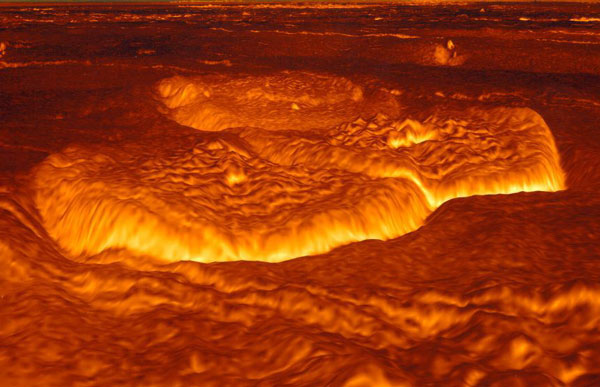 Venus is covered with solid rocks. Hot lava circulates beneath them, causing tension in a thin surface layer. Lava is constantly erupting from holes and fissures in solid rock. In addition, volcanoes constantly emit jets of small droplets of sulfuric acid. In some places, thick lava, gradually oozing, accumulates in the form of huge puddles up to 25 km wide. In other places, huge bubbles of lava form on the surface of the dome, which then fall off.
Venus is covered with solid rocks. Hot lava circulates beneath them, causing tension in a thin surface layer. Lava is constantly erupting from holes and fissures in solid rock. In addition, volcanoes constantly emit jets of small droplets of sulfuric acid. In some places, thick lava, gradually oozing, accumulates in the form of huge puddles up to 25 km wide. In other places, huge bubbles of lava form on the surface of the dome, which then fall off.
On the surface of Venus, a rock rich in potassium, uranium and thorium was found, which, under terrestrial conditions, corresponds not to the composition of primary volcanic rocks, but to secondary ones that have undergone exogenous processing. In other places, coarse rubble and blocky material of dark rocks with a density of 2.7-2.9 g/cm and other elements typical of basalts occur on the surface. Thus, the surface rocks of Venus turned out to be the same as on the Moon, Mercury and Mars, erupted igneous rocks of the basic composition.
Little is known about the interior of Venus. It probably has a metal core taking up 50% of its radius. But the planet does not have a magnetic field due to its very slow rotation.
Venus is by no means a hospitable world, as it was once supposed. With its atmosphere of carbon dioxide, clouds of sulfuric acid and terrible heat, it is completely unsuitable for humans. Under the weight of this information, some hopes collapsed: after all, less than 20 years ago, many scientists considered Venus to be a more promising object for space research than Mars.
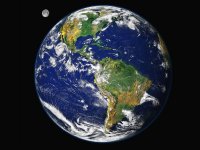
Earth.
General information.
Earth is the third planet from the Sun in the solar system. The shape of the Earth is close to an ellipsoid, flattened at the poles and stretched in the equatorial zone. The average radius of the Earth is 6371.032 km, polar - 6356.777 km, equatorial - 6378.160 km. Weight - 5.976 * 1024 kg. The average density of the Earth is 5518 kg/m3. The surface area of the Earth is 510.2 million km², of which approximately 70.8% is in the World Ocean. Its average depth is about 3.8 km, the maximum (the Mariana Trench in the Pacific Ocean) is 11.022 km; the volume of water is 1370 million km³, the average salinity is 35 g/l. Land makes up 29.2%, respectively, and forms six continents and islands. It rises above sea level by an average of 875 m; the highest height (the peak of Chomolungma in the Himalayas) is 8848 m. Mountains occupy more than 1/3 of the land surface. Deserts cover about 20% of the land surface, savannas and light forests - about 20%, forests - about 30%, glaciers - over 10%. Over 10% of the land is occupied by agricultural land.
The Earth has only one satellite, the Moon.
Thanks to its unique, perhaps the only natural conditions in the Universe, the Earth became the place where organic life arose and developed. According to modern cosmogonic concepts, the planet was formed approximately 4.6 - 4.7 billion years ago from a protoplanetary cloud captured by the attraction of the Sun. The formation of the first, most ancient of the studied rocks took 100-200 million years. Approximately 3.5 billion years ago, conditions favorable for the emergence of life arose. Homo sapiens (the Homo sapiens) as a species appeared about half a million years ago, and the formation of the modern type of man is attributed to the time of the retreat of the first glacier, that is, about 40 thousand years ago.
Traffic.
Like other planets, it moves around the Sun in an elliptical orbit, the eccentricity of which is 0.017. The distance from the Earth to the Sun at different points of the orbit is not the same. The average distance is about 149.6 million km. In the process of the movement of our planet around the Sun, the plane of the earth's equator moves parallel to itself in such a way that in some parts of the orbit the globe is inclined to the Sun with its northern hemisphere, and in others - with its southern one. The period of revolution around the Sun is 365.256 days, with a daily rotation - 23 hours 56 minutes. The axis of rotation of the Earth is located at an angle of 66.5º to the plane of its movement around the Sun.
Atmosphere .
The Earth's atmosphere consists of 78% nitrogen and 21% oxygen (there are very few other gases in the atmosphere); it is the result of a long evolution under the influence of geological, chemical and biological processes. Perhaps the Earth's early atmosphere was rich in hydrogen, which then escaped. The degassing of the bowels filled the atmosphere with carbon dioxide and water vapor. But the vapor condensed in the oceans, and the carbon dioxide was trapped in carbonate rocks. Thus, nitrogen remained in the atmosphere, and oxygen appeared gradually as a result of the vital activity of the biosphere. Even 600 million years ago, the oxygen content in the air was 100 times lower than today.
Our planet is surrounded by a vast atmosphere. According to temperature, the composition and physical properties of the atmosphere can be divided into different layers. The troposphere is the region between the Earth's surface and a height of 11 km. This is a rather thick and dense layer containing most of the water vapor in the air. Almost all atmospheric phenomena that are of direct interest to the inhabitants of the Earth take place in it. The troposphere contains clouds, precipitation, etc. The layer separating the troposphere from the next atmospheric layer, the stratosphere, is called the tropopause. This is an area of very low temperatures.
The composition of the stratosphere is the same as that of the troposphere, but ozone appears and concentrates in it. The ionosphere, that is, the ionized layer of air, is formed both in the troposphere and in lower layers. It reflects high frequency radio waves.
Atmospheric pressure at the level of the ocean surface is approximately 0.1 MPa under normal conditions. It is believed that the earth's atmosphere has changed greatly in the process of evolution: it has been enriched with oxygen and acquired a modern composition as a result of long-term interaction with rocks and with the participation of the biosphere, i.e., plant and animal organisms. Evidence that such changes have indeed taken place are, for example, deposits of coal and thick layers of carbonate deposits in sedimentary rocks, they contain a huge amount of carbon, which used to be part of the earth's atmosphere in the form of carbon dioxide and carbon monoxide. Scientists believe that the ancient atmosphere originated from the gaseous products of volcanic eruptions; its composition is judged by the chemical analysis of gas samples "walled up" in the cavities of ancient rocks. The studied samples, which are approximately 3.5 billion years old, contain approximately 60% carbon dioxide, and the remaining 40% are sulfur compounds, ammonia, hydrogen chloride and fluoride. Nitrogen and inert gases were found in a small amount. All oxygen was chemically bound.
For biological processes on Earth, the ozonosphere is of great importance - the ozone layer located at an altitude of 12 to 50 km. The area above 50-80 km is called the ionosphere. Atoms and molecules in this layer are intensely ionized by solar radiation, in particular ultraviolet radiation. If it were not for the ozone layer, radiation fluxes would reach the surface of the Earth, causing destruction in the living organisms present there. Finally, at distances greater than 1000 km, the gas is so rarefied that collisions between molecules cease to play a significant role, and the atoms are more than half ionized. At a height of about 1.6 and 3.7 Earth radii are the first and second radiation belts.

The structure of the planet.
The main role in the study of the internal structure of the Earth is played by seismic methods based on the study of the propagation in its thickness of elastic waves (both longitudinal and transverse) that occur during seismic events - during natural earthquakes and as a result of explosions. Based on these studies, the Earth is conventionally divided into three regions: the crust, the mantle, and the core (in the center). The outer layer - the crust - has an average thickness of about 35 km. The main types of the earth's crust are continental (mainland) and oceanic; in the transition zone from the mainland to the ocean, an intermediate type of crust is developed. The thickness of the crust varies over a fairly wide range: the oceanic crust (taking into account the water layer) has a thickness of about 10 km, while the thickness of the continental crust is tens of times greater. Surface deposits occupy a layer about 2 km thick. Below them is a granite layer (on the continents its thickness is 20 km), and below - about 14 km (both on the continents and in the oceans) basalt layer (lower crust). The density at the center of the Earth is about 12.5 g/cm³. The average densities are: 2.6 g / cm - at the surface of the Earth, 2.67 g / cm - for granite, 2.85 g / cm - for basalt.
To a depth of about 35 to 2885 km, the Earth's mantle extends, which is also called the silicate shell. It is separated from the crust by a sharp boundary (the so-called Mohorovich boundary), deeper than which the velocities of both longitudinal and transverse elastic seismic waves, as well as the mechanical density, increase abruptly. Densities in the mantle increase with increasing depth from about 3.3 to 9.7 g/cm3. Extensive lithospheric plates are located in the crust and (partially) in the mantle. Their secular movements not only determine the drift of the continents, which noticeably affects the appearance of the Earth, but are also related to the location of seismic zones on the planet. Another boundary discovered by seismic methods (the Gutenberg boundary) - between the mantle and the outer core - is located at a depth of 2775 km. On it, the velocity of longitudinal waves drops from 13.6 km/s (in the mantle) to 8.1 km/s (in the core), while the velocity of transverse waves decreases from 7.3 km/s to zero. The latter means that the outer core is liquid. According to modern concepts, the outer core consists of sulfur (12%) and iron (88%). Finally, at depths greater than 5120 km, seismic methods reveal the presence of a solid inner core, which accounts for 1.7% of the Earth's mass. Presumably, this is an iron-nickel alloy (80% Fe, 20% Ni).
The Earth's gravitational field is described with high accuracy by Newton's law of universal gravitation. The free fall acceleration over the Earth's surface is determined by both the gravitational and centrifugal force due to the Earth's rotation. The free fall acceleration near the planet's surface is 9.8 m/s².
The earth also has magnetic and electric fields. The magnetic field above the Earth's surface consists of a constant (or changing slowly enough) and a variable part; the latter is usually referred to as variations of the magnetic field. The main magnetic field has a structure close to dipole. The magnetic dipole moment of the Earth, equal to 7.98T10^25 cgsm units, is directed approximately opposite to the mechanical one, although at present the magnetic poles are somewhat shifted with respect to the geographic ones. Their position, however, changes with time, and although these changes are quite slow, over geological time intervals, according to paleomagnetic data, even magnetic inversions, that is, polarity reversals, are detected. The magnetic field strengths at the north and south magnetic poles are 0.58 and 0.68 Oe, respectively, and about 0.4 Oe at the geomagnetic equator.
The electric field above the Earth's surface has an average intensity of about 100 V / m and is directed vertically downward - this is the so-called fair weather field, but this field experiences significant (both periodic and irregular) variations.
Moon.
The Moon is a natural satellite of the Earth and the closest celestial body to us. The average distance to the Moon is 384,000 kilometers, the diameter of the Moon is about 3476 km. The average density of the Moon is 3.347 g/cm3, or about 0.607 of the average density of the Earth. The mass of the satellite is 73 trillion tons. The acceleration of gravity on the surface of the moon is 1.623 m/s².
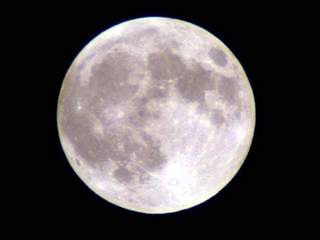 The Moon moves around the Earth at an average speed of 1.02 km / s in an approximately elliptical orbit in the same direction in which the vast majority of other bodies in the Solar System move, that is, counterclockwise when viewed from the Moon's orbit from the North Pole of the World. The period of revolution of the Moon around the Earth, the so-called sidereal month, is equal to 27.321661 mean days, but is subject to slight fluctuations and a very small secular reduction.
The Moon moves around the Earth at an average speed of 1.02 km / s in an approximately elliptical orbit in the same direction in which the vast majority of other bodies in the Solar System move, that is, counterclockwise when viewed from the Moon's orbit from the North Pole of the World. The period of revolution of the Moon around the Earth, the so-called sidereal month, is equal to 27.321661 mean days, but is subject to slight fluctuations and a very small secular reduction.
Not being protected by the atmosphere, the surface of the Moon heats up to + 110 ° C during the day, and cools down to -120 ° C at night, however, as radio observations have shown, these huge temperature fluctuations penetrate only a few decimeters deep due to the extremely weak thermal conductivity of the surface layers.
The relief of the lunar surface was mainly elucidated as a result of many years of telescopic observations. The "lunar seas", occupying about 40% of the visible surface of the Moon, are flat lowlands, crossed by cracks and low winding shafts; there are relatively few large craters on the seas. Many seas are surrounded by concentric ring ridges. The rest, lighter surface is covered with numerous craters, ring-shaped ridges, furrows, and so on.
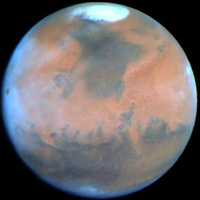
Mars.
General information.
Mars is the fourth planet in the solar system. Mars - from the Greek "Mas" - male power - the god of war. According to the main physical characteristics, Mars belongs to the terrestrial planets. In diameter, it is almost half the size of Earth and Venus. The average distance from the Sun is 1.52 AU. The equatorial radius is 3380 km. The average density of the planet is 3950 kg/m3. Mars has two satellites - Phobos and Deimos.
Atmosphere.
The planet is shrouded in a gaseous shell - an atmosphere that has a lower density than the earth's. Even in the deep depressions of Mars, where the atmospheric pressure is greatest, it is approximately 100 times less than at the Earth's surface, and at the level of the Martian mountain peaks, it is 500-1000 times less. In composition, it resembles the atmosphere of Venus and contains 95.3% carbon dioxide with an admixture of 2.7% nitrogen, 1.6% argon, 0.07% carbon monoxide, 0.13% oxygen and approximately 0.03% water vapor, the content which changes, as well as impurities of neon, krypton, xenon.
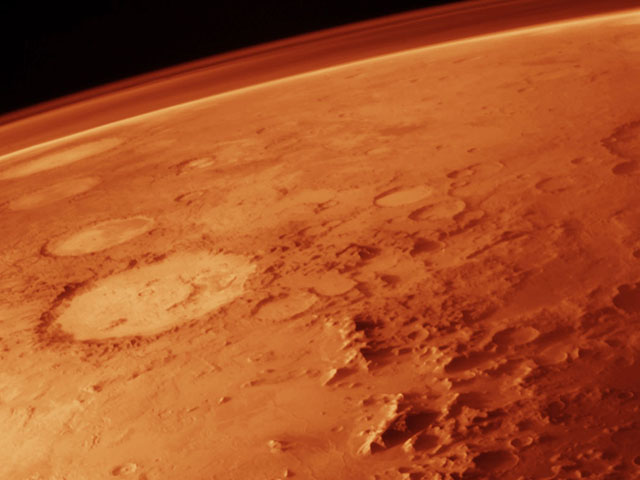
The average temperature on Mars is much lower than on Earth, about -40 ° C. Under the most favorable conditions in the summer in the daytime half of the planet, the air warms up to 20 ° C - quite an acceptable temperature for the inhabitants of the Earth. But on a winter night, frost can reach -125 ° C. Such sharp temperature drops are caused by the fact that the rarefied atmosphere of Mars is not able to retain heat for a long time.
Strong winds often blow over the surface of the planet, the speed of which reaches 100 m/s. Low gravity allows even rarefied air currents to raise huge clouds of dust. Sometimes quite vast areas on Mars are covered by grandiose dust storms. The global dust storm raged from September 1971 to January 1972, lifting about a billion tons of dust into the atmosphere to a height of more than 10 km.
There is very little water vapor in the atmosphere of Mars, but at low pressure and temperature, it is in a state close to saturation, and often gathers into clouds. Martian clouds are rather inexpressive compared to those on Earth, although they have a variety of shapes and types: cirrus, wavy, leeward (near large mountains and under the slopes of large craters, in places protected from the wind). Over lowlands, canyons, valleys - and at the bottom of craters in the cold time of the day there are often fogs.
As the images from the American landing stations "Viking-1" and "Viking-2" showed, the Martian sky in clear weather has a pinkish color, which is explained by the scattering of sunlight on dust particles and the illumination of the haze by the orange surface of the planet. In the absence of clouds, the gaseous envelope of Mars is much more transparent than the earth's, including for ultraviolet rays dangerous to living organisms.
Seasons.
A solar day on Mars lasts 24 hours 39 minutes. 35 s. A significant inclination of the equator to the plane of the orbit leads to the fact that in some parts of the orbit, mainly the northern latitudes of Mars are illuminated and heated by the Sun, in others - the southern ones, that is, there is a change of seasons. The Martian year is about 686.9 days long. The change of seasons on Mars is the same as on Earth. Seasonal changes are most pronounced in the polar regions. In winter, the polar caps occupy a significant area. The boundary of the northern polar cap can move away from the pole by a third of the distance from the equator, and the boundary of the southern cap overcomes half this distance. This difference is due to the fact that in the northern hemisphere winter occurs when Mars passes through the perihelion of its orbit, and in the southern hemisphere when it passes through aphelion. Because of this, winters in the southern hemisphere are colder than in the northern. The ellipticity of the Martian orbit leads to significant differences in the climate of the northern and southern hemispheres: in the middle latitudes, winters are colder and summers are warmer than in the southern ones, but shorter than in the northern ones .. When summer comes in the northern hemisphere of Mars, the northern polar cap decreases rapidly, but at this time, another grows - near the south pole, where winter sets in. AT late XIX- at the beginning of the 20th century, it was believed that the polar caps of Mars were glaciers and snow. According to modern data, both polar caps of the planet - northern and southern - consist of solid carbon dioxide, that is, dry ice, which is formed when carbon dioxide, which is part of the Martian atmosphere, freezes, and water ice mixed with mineral dust.
The structure of the planet.
Due to the low mass, gravity on Mars is almost three times lower than on Earth. At present, the structure of the gravitational field of Mars has been studied in detail. It indicates a slight deviation from the uniform density distribution in the planet. The core can have a radius up to half the radius of the planet. Apparently, it consists of pure iron or an alloy of Fe-FeS (iron-iron sulfide) and, possibly, hydrogen dissolved in them. Apparently, the core of Mars is partially or completely in a liquid state.
Mars must have a thick crust 70-100 km thick. Between the core and the crust is a silicate mantle enriched in iron. The red iron oxides present in the surface rocks determine the color of the planet. Now Mars continues to cool.
The seismic activity of the planet is weak.
Surface.
The surface of Mars, at first glance, resembles the moon. However, in fact, its relief is very diverse. Throughout the long geological history of Mars, its surface has been altered by volcanic eruptions and marsquakes. Deep scars on the face of the god of war were left by meteorites, wind, water and ice.
The surface of the planet consists, as it were, of two contrasting parts: the ancient highlands covering the southern hemisphere, and the younger plains concentrated in the northern latitudes. In addition, two large volcanic regions stand out - Elysium and Tharsis. The height difference between mountainous and flat areas reaches 6 km. Why different areas differ so much from each other is still unclear. Perhaps such a division is associated with a very old catastrophe - the fall of a large asteroid on Mars.
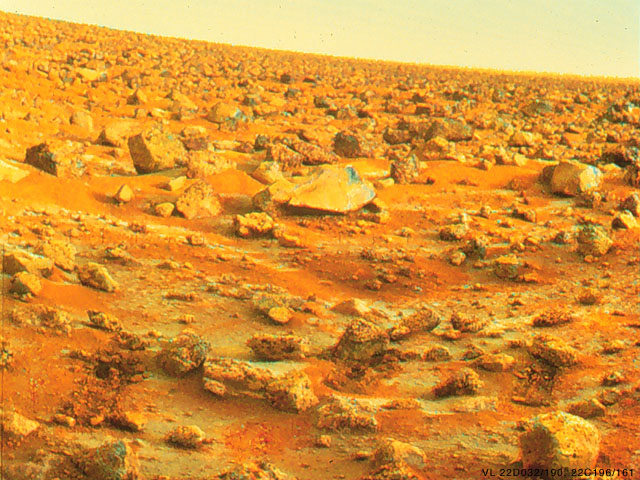
The high-mountain part has preserved traces of an active meteorite bombardment that took place about 4 billion years ago. Meteor craters cover 2/3 of the planet's surface. There are almost as many of them in the old highlands as on the Moon. But many Martian craters have "lost their shape" due to weathering. Some of them, apparently, were once washed away by streams of water. The northern plains look completely different. 4 billion years ago they had a lot of meteorite craters, but then the catastrophic event, which has already been mentioned, erased them from 1/3 of the planet's surface and its relief in this area began to form anew. Separate meteorites fell there later, but in general there are few impact craters in the north.
The appearance of this hemisphere was determined by volcanic activity. Some of the plains are completely covered with ancient igneous rocks. Streams of liquid lava spread over the surface, solidified, and new streams flowed along them. These petrified "rivers" are concentrated around large volcanoes. At the ends of lava tongues, structures similar to terrestrial sedimentary rocks are observed. Probably, when the hot eruptive masses melted the layers of underground ice, quite extensive reservoirs formed on the surface of Mars, which gradually dried up. The interaction of lava and underground ice also led to the appearance of numerous furrows and cracks. Far from volcanoes, low-lying areas of the northern hemisphere are covered by sand dunes. Especially a lot of them near the northern polar cap.
The abundance of volcanic landscapes indicates that in the distant past, Mars experienced a rather turbulent geological era, most likely it ended about a billion years ago. The most active processes took place in the regions of Elysium and Tharsis. At one time they were literally squeezed out of the bowels of Mars and now rise above its surface in the form of grandiose swellings: Elysium 5 km high, Tharsis - 10 km. Numerous faults, cracks, ridges are concentrated around these swellings - traces of ancient processes in the Martian crust. The most grandiose system of canyons several kilometers deep - the Mariner Valley - begins at the top of the Tharsis Mountains and stretches 4 thousand kilometers to the east. In the central part of the valley, its width reaches several hundred kilometers. In the past, when the Martian atmosphere was denser, water could drain into the canyons, creating deep lakes in them.
The volcanoes of Mars are exceptional phenomena by earthly standards. But even among them, the volcano Olympus, located in the northwest of the Tharsis Mountains, stands out. The diameter of the base of this mountain reaches 550 km, and the height is 27 km, i.e. it is three times the height of Everest, the highest peak on Earth. Olympus is crowned with a huge 60-kilometer crater. To the east of the highest part of the Tharsis Mountains, another volcano has been discovered - Alba. Although it cannot compete with Olympus in height, its base diameter is almost three times larger.
These volcanic cones are the result of calm eruptions of very liquid lava, similar in composition to the lava of the terrestrial volcanoes of the Hawaiian Islands. Traces of volcanic ash on the slopes of other mountains suggest that catastrophic eruptions have occasionally occurred on Mars.
In the past, flowing water played a huge role in shaping the Martian relief. At the first stages of the study, Mars seemed to astronomers a desert and waterless planet, but when the surface of Mars was photographed from a close distance, it turned out that in the old highlands there are often gullies left as if by flowing water. Some of them look like they were pierced many years ago by stormy, swift currents. They sometimes stretch for many hundreds of kilometers. Some of these "brooks" have a rather respectful age. Other valleys are very similar to the beds of calm earthly rivers. They probably owe their appearance to the melting of underground ice.
Some additional information about Mars can be obtained by indirect methods based on studies of its natural satellites - Phobos and Deimos.
Satellites of Mars.
The moons of Mars were discovered on August 11 and 17, 1877 during the great opposition by American astronomer Asaph Hall. The satellites received such names from Greek mythology: Phobos and Deimos, the sons of Ares (Mars) and Aphrodite (Venus), always accompanied their father. Translated from Greek, “phobos” means “fear”, and “deimos” means “horror”.
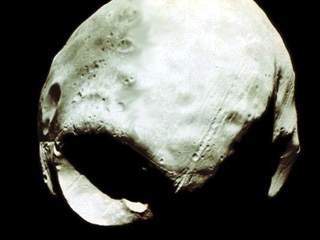
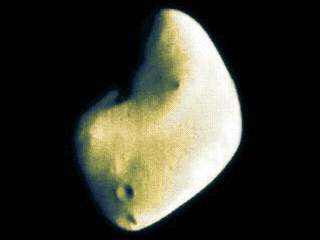
Phobos. Deimos.
Both satellites of Mars move almost exactly in the plane of the planet's equator. With the help of spacecraft, it was established that Phobos and Deimos have an irregular shape and in their orbital position always remain turned to the planet by the same side. The dimensions of Phobos are about 27 km, and Deimos - about 15 km. The surface of the moons of Mars consists of very dark minerals and is covered with numerous craters. One of them - on Phobos has a diameter of about 5.3 km. The craters are probably produced by meteorite bombardment; the origin of the system of parallel furrows is unknown. The angular velocity of the orbital motion of Phobos is so great that, unlike other luminaries, Phobos rises in the west, overtaking the axial rotation of the planet, and sets in the east.
The search for life on Mars.
For a long time, the search for forms of extraterrestrial life was conducted on Mars. During the study of the planet by spacecraft of the Viking series, three complex biological experiments were performed: pyrolysis decomposition, gas exchange, label decomposition. They are based on the experience of studying earthly life. The pyrolysis decomposition experiment was based on the definition of photosynthesis processes involving carbon, the label decomposition experiment was based on the assumption that water is necessary for existence, and the gas exchange experiment took into account that Martian life must use water as a solvent. Although all three biological experiments gave a positive result, they are probably non-biological in nature and can be explained by inorganic reactions of the nutrient solution with the material of the Martian nature. So, we can summarize that Mars is a planet that does not have the conditions for the emergence of life.
Conclusion
We got acquainted with the current state of our planet and the planets of the Earth group. The future of our planet, and indeed the entire planetary system, if nothing unforeseen happens, seems clear. The probability that the established order of the planets will be disturbed by some wandering star is small, even within a few billion years. In the near future, one should not expect strong changes in the flow of solar energy. It is likely that ice ages will repeat. A person is able to change the climate, but in doing so, he can make a mistake. The continents will rise and fall in subsequent epochs, but we hope that the processes will be slow. Massive meteorite impacts are possible from time to time.
But for the most part, the solar system will retain its current appearance.
Plan.
1. Introduction.
2. Mercury.
3. Venus.
6. Conclusion.
7. Literature.
Planet Mercury.
surface of Mercury.
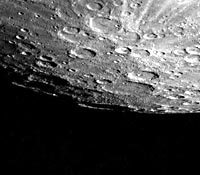
Planet Venus.
Surface of Venus.

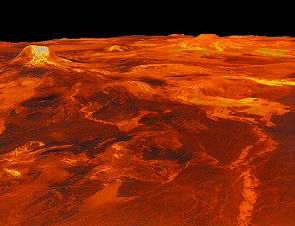
Planet Earth.
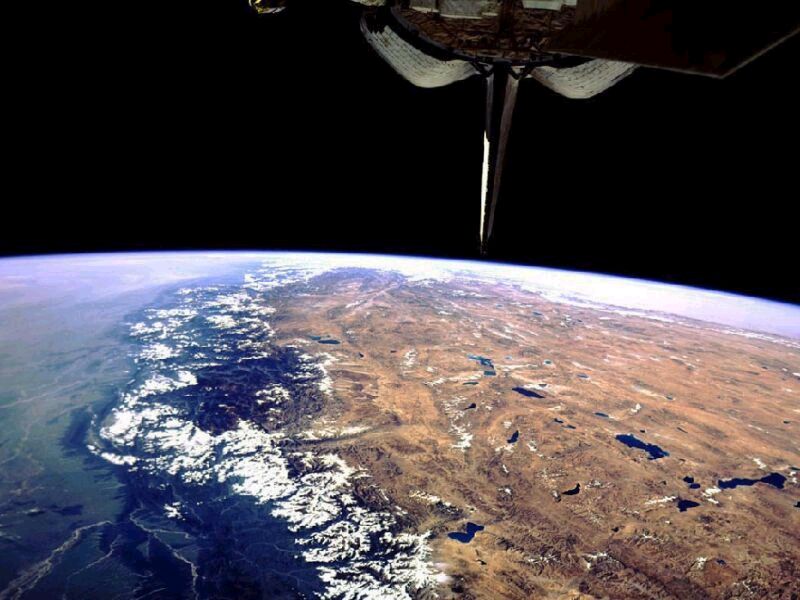

Land surface.

The planet Mars.
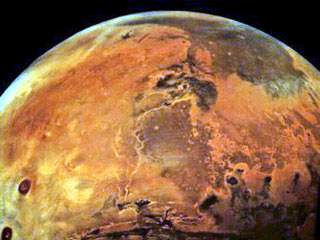
Surface of Mars.

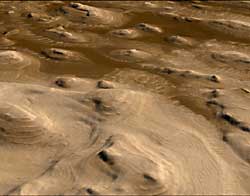

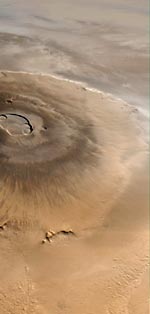
Volcano Olympus
Kreneva Evgenia
The paper describes the planets belonging to the Earth group. The conditions on these planets, their common features, as well as the features of each planet.
Download:
Preview:
To use the preview of presentations, create a Google account (account) and sign in: https://accounts.google.com
Slides captions:
PLANETS OF THE TERRESTRIAL GROUP Presentation on astronomy Prepared by a student of the 11th grade Kreneva Evgenia GBOU secondary school No. 8 of Moscow
SOLAR SYSTEM
Terrestrial planets These are the four planets of the solar system: Mercury, Venus, Earth and Mars. They are also called the inner planets, in contrast to the outer planets - giant planets.
The terrestrial planets have a high density and consist mainly of silicates and metallic, as well as oxygen, silicon, iron, magnesium, aluminum and other heavy elements. The largest planet of the terrestrial group is the Earth, but it is more than 14 times inferior in mass to the least massive gas planet - Uranus. All planets of the terrestrial group have the following structure: - in the center, the core is made of iron with an admixture of nickel, - the mantle, consists of silicates, - the crust, formed as a result of partial melting of the mantle and also consisting of silicate rocks, but enriched with incompatible elements. Of the terrestrial planets, Mercury does not have a crust, which is explained by its destruction as a result of meteorite bombardment.
MERCURY It is closest to the sun. The existence of this planet was mentioned in the ancient Sumerian writings, which date back to the third millennium BC. The name of this planet is grateful to the Roman pantheon Mercury, the patron saint of merchants, who also had his Greek counterpart - Hermes. Mercury completely circumnavigates the sun in eighty-eight Earth days. It travels around its axis in less than sixty days, which by Mercury standards is two-thirds of a year. The temperature on the surface of Mercury can fluctuate very strongly - from + 430 degrees on the side of the sun and up to + 180 degrees on the shadow side. In our solar system, these drops are the strongest.
MERCURY At Mercury, one can observe such an unusual phenomenon, which is called the Joshua effect. When the sun on Mercury reaches a certain point, it stops and starts to go in the opposite direction, and not like on Earth - it must go around the full circle around the planet. Mercury is the smallest planet in the Earth group. It is inferior in size even to the largest satellites of the planets Jupiter and Saturn. The surface of Mercury is similar to the surface of the Moon - all strewn with craters. The only difference with the lunar surface is that Mercury has numerous oblique jagged slopes that can extend for many hundreds of kilometers. These escarpments were formed as a result of compression when the planet cooled.
MERCURY One of the most popular and visible parts of the planet is the so-called Plain of Heat. This is a crater that got its name from its proximity to the "hot longitudes". The crater has a diameter of one thousand three hundred kilometers. Most likely, heavenly body, which in ancient times made this crater, had a diameter of at least one hundred kilometers. Thanks to gravity, Mercury also captures particles of the solar wind, which in turn make the atmosphere around Mercury quite rarefied. And they are replaced every two hundred days. In addition, this planet is the fastest planet in our system. The average speed of its rotation around the sun is about forty-seven and a half kilometers per second, which is twice as fast as the Earth.
VENUS The atmosphere of Venus is quite aggressive, because it has a very high temperature relative to the Earth and there are poisonous clouds in the sky. The atmosphere of Venus consists mainly of carbon dioxide alone. If you find yourself in the atmosphere of this planet, then the pressure will be about eighty-five kg per 1 square centimeter. In the Earth's atmosphere, the pressure will be eighty-five times less. If you throw a coin in the atmosphere of Venus, it will fall, as if in a layer of water. Thus, walking on the surface of this planet is as difficult as walking on the bottom of the ocean. And if, God forbid, the wind rises on Venus, then it will carry you like a sea wave carries a chip.
VENUS The atmosphere of this planet is 96% carbon dioxide. This is what creates the greenhouse effect. The surface of the planet is heated by the sun, and the generated heat cannot be dissipated in space, because it is reflected by a layer of carbon dioxide. That's why the temperature of this planet is about four hundred and eighty degrees, like in an oven.
VENUS Thousands of volcanoes dot the surface of Venus. Fantasts described Venus as similar to Earth. It was believed that Venus was shrouded in clouds. This means that swamps should dot the surface of this planet. So, for sure there is a very rainy climate, which leads to a lot of clouds and high humidity. In reality, everything is completely different - in the early seventies, the Union sent spaceships to the surface of Venus, which clarified the situation. It turned out that the surface of this planet is made up of continuous rocky deserts, where there is absolutely no water. Of course, at such a high temperature, there could never be any water.
EARTH The Earth ranks fifth in size and mass among the major planets, but of the terrestrial planets, it is the largest. Its most important difference from other planets of the solar system is the existence of life on it, which has reached its highest, intelligent form with the advent of man. According to modern cosmogonic concepts, the Earth was formed ~4.5 billion years ago by gravitational condensation from the gas-dust substance scattered in the near-solar space, which contains all chemical elements known in nature.
EARTH The formation of the Earth was accompanied by differentiation of matter, which was facilitated by the gradual heating of the earth's interior, mainly due to the heat released during the decay radioactive elements(uranium, thorium, potassium, etc.). The result of this differentiation was the division of the Earth into concentrically located layers - geospheres, differing in chemical composition, state of aggregation and physical properties. In the center, the core of the Earth was formed, surrounded by a mantle. From the lightest and most fusible components of matter, released from the mantle in the processes of melting, the earth's crust, located above the mantle, arose. The totality of these internal geospheres, limited by solid earth's surface, sometimes referred to as the "solid" Earth.
EARTH The "solid" Earth contains almost the entire mass of the planet. Beyond its limits are the outer geospheres - water (hydrosphere) and air (atmosphere), which were formed from vapors and gases released from the bowels of the Earth during the degassing of the mantle. Differentiation of the substance of the Earth's mantles and replenishment of the products of differentiation of the earth's crust, water and air shells occurred throughout the entire geological history and continue to this day.
MARS This planet is named after the famous god of War in Rome, because the color of this planet is very similar to the color of blood. This planet is also called the "red planet". It is believed that this color of the planet is associated with iron oxide, which is present in the atmosphere of Mars. Mars is the seventh largest planet in the solar system. It is considered to be the home of the Mariner Valley - a canyon that is much longer and deeper than the famous Grand Canyon in the USA. By the way, there are mountains on Mars, which are not few, and the height of these mountains is sometimes much higher than our Everest. Here, by the way, there is also Olympus - the highest and most famous mountain in the entire solar system.
MARS Mars has the largest volcanoes in the solar system. But the atmosphere of this planet is a hundred times less dense than the earth. But even this is enough to support the weather system on the planet - that means wind and clouds. Mars has an average temperature of minus sixty degrees. A year on Mars = 687 Earth days. But a day on Mars is as close as possible to an earthly day - it is 24 hours, 39 minutes. and 35 sec. Mars has a very thick crust - about fifty kilometers in cross section. Mars also has two moons, Deimos and Phobos.
Thank you for your attention!
Introduction
Among the numerous celestial bodies studied by modern astronomy, the planets occupy a special place. After all, we all know very well that the Earth on which we live is a planet, so the planets are bodies, basically similar to our Earth.
But in the world of planets, we will not even meet two that are completely similar to each other. The variety of physical conditions on the planets is very great. The distance of the planet from the Sun (and hence the amount of solar heat and surface temperature), its size, gravity stress on the surface, the orientation of the axis of rotation, which determines the change of seasons, the presence and composition of the atmosphere, the internal structure and many other properties are different for everyone nine planets in the solar system.
Speaking about the diversity of conditions on the planets, we can better understand the laws of their development and find out their relationship between certain properties of the planets. So, for example, its ability to hold an atmosphere of one composition or another depends on the size, mass and temperature of the planet, and the presence of the atmosphere, in turn, affects the thermal regime of the planet.
As the study of the conditions under which the origin and further development of living matter is possible shows, only on the planets can we look for signs of the existence of organic life. That is why the study of planets, in addition to general interest, is of great importance from the point of view of space biology.
The study of the planets is of great importance, in addition to astronomy, for other areas of science, primarily the Earth sciences - geology and geophysics, as well as for cosmogony - the science of the origin and development of celestial bodies, including our Earth.
The terrestrial planets include the planets: Mercury, Venus, Earth and Mars.
Mercury.
General information.
Mercury is the closest planet to the Sun in the solar system. The average distance from Mercury to the Sun is only 58 million km. Among the large planets, it has the smallest dimensions: its diameter is 4865 km (0.38 of the diameter of the Earth), its mass is 3.304 * 10 23 kg (0.055 of the mass of the Earth or 1: 6025000 of the mass of the Sun); average density 5.52 g/cm 3 . Mercury is a bright star, but it is not so easy to see it in the sky. The fact is that, being near the Sun, Mercury is always visible to us not far from the solar disk, moving away from it either to the left (to the east), then to the right (to the west) only a short distance, which does not exceed 28 O. Therefore, it can be see only on those days of the year when it moves away from the Sun at its greatest distance. Let, for example, Mercury moved away from the Sun to the left. The sun and all the luminaries in their daily movement float across the sky from left to right. Therefore, the Sun sets first, and after a little over an hour Mercury sets, and we must look for this planet low above the Western horizon.
Traffic.
Mercury moves around the Sun at an average distance of 0.384 astronomical units (58 million km) in an elliptical orbit with a large eccentricity e-0.206; at perihelion, the distance to the Sun is 46 million km, and at aphelion, 70 million km. The planet makes a complete flight around the Sun in three Earth months or 88 days at a speed of 47.9 km / s. Moving along its path around the Sun, Mercury at the same time rotates around its axis so that one and the same half of it always faces the Sun. This means that it is always day on one side of Mercury and night on the other. In the 60s. using radar observations, it was found that Mercury rotates around the axis in the forward direction (i.e., as in orbital motion) with a period of 58.65 days (relative to the stars). The length of a solar day on Mercury is 176 days. The equator is inclined to the plane of its orbit by 7°. The angular velocity of the axial rotation of Mercury is 3/2 of the orbital and corresponds to the angular velocity of its movement in orbit when the planet is at perihelion. Based on this, it can be assumed that the speed of rotation of Mercury is due to tidal forces from the Sun.
Atmosphere.
Mercury is possibly devoid of an atmosphere, although polarization and spectral observations indicate the presence of a faint atmosphere. With the help of Mariner-10, the presence of a highly rarefied gaseous envelope near Mercury, consisting mainly of helium, was established. This atmosphere is in dynamic equilibrium: each helium atom stays in it for about 200 days, after which it leaves the planet, and another particle from the solar wind plasma takes its place. In addition to helium, an insignificant amount of hydrogen has been found in the atmosphere of Mercury. It is about 50 times smaller than helium.
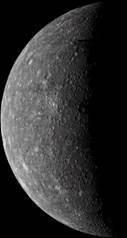 It also turned out that Mercury has a weak magnetic field, the strength of which is only 0.7% of the earth's. The inclination of the dipole axis to the axis of rotation of Mercury is 12 0 (earth is 11 0)
It also turned out that Mercury has a weak magnetic field, the strength of which is only 0.7% of the earth's. The inclination of the dipole axis to the axis of rotation of Mercury is 12 0 (earth is 11 0)
The pressure at the surface of the planet is approximately 500 billion times less than that at the surface of the Earth.
Temperature.
Mercury is much closer to the Sun than Earth. Therefore, the Sun on it shines and warms 7 times stronger than ours. On the day side of Mercury, it is terribly hot, there is eternal hell. Measurements show that the temperature there rises to 400 O above zero. But on the night side there should always be a strong frost, which probably reaches 200 O and even 250 O below zero. It turns out that one half of it is a hot stone desert, and the other half is an icy desert, perhaps covered with frozen gases.
Surface.
 From the flyby trajectory of the Mariner 10 spacecraft in 1974, more than 40% of the surface of Mercury was photographed with a resolution from 4 mm to 100 m, which made it possible to see Mercury in much the same way as the Moon in the dark from the Earth. The abundance of craters is the most obvious feature of its surface, which at first glance can be likened to the moon.
From the flyby trajectory of the Mariner 10 spacecraft in 1974, more than 40% of the surface of Mercury was photographed with a resolution from 4 mm to 100 m, which made it possible to see Mercury in much the same way as the Moon in the dark from the Earth. The abundance of craters is the most obvious feature of its surface, which at first glance can be likened to the moon.
Indeed, the morphology of the craters is close to that of the moon, and their impact origin is beyond doubt: in most of them, traces of ejections of material crushed upon impact are visible with the formation in some cases of characteristic bright rays and a field of secondary craters. Many craters have a central mound and a terraced structure of the inner slope. Interestingly, not only almost all large craters with a diameter of more than 40-70 km have such features, but also a much larger number of smaller craters, within 5-70 km (of course, we are talking about well-preserved craters). These features can be attributed both to the greater kinetic energy of the bodies falling onto the surface and to the surface material itself.
The degree of erosion and smoothing of craters is different. In general, Mercury craters are less deep than lunar craters, which can also be explained by the greater kinetic energy of meteorites due to the greater acceleration of gravity on Mercury than on the Moon. Therefore, the impact crater is more efficiently filled with ejected material. For the same reason, secondary craters are located closer to the central one than on the Moon, and deposits of crushed material mask the primary landforms to a lesser extent. The secondary craters themselves are deeper than the lunar ones, which is again explained by the fact that fragments falling to the surface experience a greater acceleration of gravity.
Just as on the Moon, it is possible, depending on the relief, to distinguish predominantly uneven “continental” and much smoother “marine” regions. The latter are mainly hollows, which, however, are much smaller than on the Moon, their sizes usually do not exceed 400-600 km. In addition, some basins are hardly distinguishable against the background of the surrounding relief. The exception is the mentioned vast basin Kanoris (Sea of Heat) with a length of about 1300 km, reminiscent of the well-known Sea of Rains on the Moon.
In the predominant continental part of the surface of Mercury, one can distinguish both heavily cratered areas, with the highest degree of degradation of craters, and old intercrater plateaus occupying vast territories, indicating a widely developed ancient volcanism. These are the most ancient surviving landforms of the planet. The leveled surfaces of the basins are obviously covered with the thickest layer of crushed rocks - regolith. Along with a small number of craters, there are folded ridges resembling those of the moon. Some of the flat areas adjacent to the basins were probably formed during the deposition of material ejected from them. At the same time, quite definite evidence of their volcanic origin was found for most of the plains, but this is volcanism of a later time than on the intercrater plateaus. A careful study reveals another interesting feature that sheds light on the history of the formation of the planet. We are talking about characteristic traces of tectonic activity on a global scale in the form of specific steep ledges, or escarp slopes. Escarps have a length of 20-500 km and a height of slopes from several hundred meters to 1-2 km. In their morphology and geometry of location on the surface, they differ from the usual tectonic ruptures and faults observed on the Moon and Mars, and rather formed due to thrusts, stratifications due to stress in surface layer, which arose during the compression of Mercury. This is evidenced by the horizontal displacement of the ridges of some craters.
Some of the scarps were bombarded and partially destroyed. This means that they formed earlier than the craters on their surface. From the narrowing of the erosion of these craters, it can be concluded that the crustal compression occurred during the formation of the “seas” about 4 billion years ago. The most probable reason for the contraction must, apparently, be considered the beginning of the cooling of Mercury. According to another interesting assumption put forward by a number of experts, an alternative mechanism for the powerful tectonic activity of the planet during this period could be a tidal slowdown of the planet's rotation by about 175 times: from the originally estimated value of about 8 hours to 58.6 days.
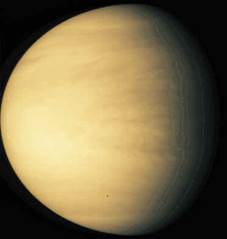
Venus.
General information.
Venus is the second closest planet to the Sun, almost the same size as the Earth, and its mass is more than 80% of the Earth's mass. For these reasons, Venus is sometimes referred to as Earth's twin or sister. However, the surface and atmosphere of these two planets are completely different. The Earth has rivers, lakes, oceans and the atmosphere we breathe. Venus is a scalding hot planet with a dense atmosphere that would be fatal to humans. The average distance from Venus to the Sun is 108.2 million km; it is practically constant, since the orbit of Venus is closer to a circle than our planet. Venus receives from the Sun more than twice as much light and heat as the Earth. However, on the shadow side, Venus is dominated by a frost of more than 20 degrees below zero, since the sun's rays do not fall here for a very long time. The planet has a very dense, deep and very cloudy atmosphere, preventing us from seeing the surface of the planet. The atmosphere (gas shell) was discovered by M. V. Lomonosov in 1761, which also showed the similarity of Venus with the Earth. The planet has no satellites.
Traffic.
Venus has an almost circular orbit (eccentricity 0.007), which it bypasses in 224.7 Earth days at a speed of 35 km/sec. at a distance of 108.2 million km from the Sun. Venus rotates around its axis in 243 Earth days - the maximum time among all the planets. Venus rotates around its axis in the opposite direction, that is, in the opposite direction to its orbit. This slow and reverse rotation means that, as seen from Venus, the Sun rises and sets only twice a year, since a Venusian day is equal to 117 Earth days. The axis of rotation of Venus is almost perpendicular to the orbital plane (tilt 3 °), so there are no seasons of the year - one day is similar to another, has the same duration and the same weather. This weather uniformity is further enhanced by the specificity of the Venusian atmosphere - its strong greenhouse effect. Also, Venus, like the Moon, has its own phases.
Temperature.
The temperature is about 750 K over the entire surface both day and night. The reason for such a high temperature near the surface of Venus is the greenhouse effect: the sun's rays relatively easily pass through the clouds of its atmosphere and heat the surface of the planet, but the thermal infrared radiation of the surface itself escapes through the atmosphere back into space with great difficulty. On Earth, where the amount of carbon dioxide in the atmosphere is low, the natural greenhouse effect raises the global temperature by 30°C, while on Venus it raises the temperature by another 400°C. By studying the physical consequences of the strongest greenhouse effect on Venus, we have a good idea of the results that the accumulation of excess heat on Earth, caused by the growing concentration of carbon dioxide in the atmosphere due to the burning of fossil fuels - coal and oil, can lead to.
In 1970, the first spacecraft to land on Venus could only endure the sweltering heat for about one hour, but that was just enough time to send back data on surface conditions.
Atmosphere.
![]() The enigmatic atmosphere of Venus has been the centerpiece of the robotic exploration program for the past two decades. The most important aspects of her research were the chemical composition, vertical structure and dynamics of the air environment. Much attention was paid to the cloud cover, which plays the role of an insurmountable barrier to the penetration of optical electromagnetic waves into the atmosphere. When filming Venus on television, it was possible to obtain an image of only the cloud cover. The extraordinary dryness of the air and its phenomenal greenhouse effect, due to which the actual temperature of the surface and lower layers of the troposphere turned out to be more than 500 above the effective (equilibrium) were incomprehensible.
The enigmatic atmosphere of Venus has been the centerpiece of the robotic exploration program for the past two decades. The most important aspects of her research were the chemical composition, vertical structure and dynamics of the air environment. Much attention was paid to the cloud cover, which plays the role of an insurmountable barrier to the penetration of optical electromagnetic waves into the atmosphere. When filming Venus on television, it was possible to obtain an image of only the cloud cover. The extraordinary dryness of the air and its phenomenal greenhouse effect, due to which the actual temperature of the surface and lower layers of the troposphere turned out to be more than 500 above the effective (equilibrium) were incomprehensible.
The atmosphere of Venus is extremely hot and dry due to the greenhouse effect. It is a dense blanket of carbon dioxide that retains the heat that comes from the sun. As a result, a large amount of thermal energy accumulates. The pressure at the surface is 90 bar (as in the Earth's seas at a depth of 900 m). Spaceships they have to be designed to withstand the crushing, crushing force of the atmosphere.
The atmosphere of Venus consists mainly of carbon dioxide (CO 2) -97%, which is able to act as a kind of blanket, trapping the heat of the sun, as well as a small amount of nitrogen (N 2) -2.0%, water vapor (H 2 O) -0.05% and oxygen (O) -0.1%. Hydrochloric acid (HCl) and hydrofluoric acid (HF) were found as small impurities. The total amount of carbon dioxide on Venus and Earth is approximately the same. Only on Earth it is bound in sedimentary rocks and partly absorbed by the water masses of the oceans, while on Venus it is all concentrated in the atmosphere. During the day, the surface of the planet is illuminated by scattered sunlight with about the same intensity as on an overcast day on Earth. A lot of lightning has been seen on Venus at night.
The clouds of Venus are made up of microscopic droplets of concentrated sulfuric acid (H 2 SO 4). The upper layer of clouds is 90 km away from the surface, the temperature there is about 200 K; the lower layer is 30 km away, the temperature is about 430 K. Even lower it is so hot that there are no clouds. Of course, there is no liquid water on the surface of Venus. The atmosphere of Venus at the level of the upper cloud layer rotates in the same direction as the surface of the planet, but much faster, making a revolution in 4 days; this phenomenon is called superrotation, and no explanation has yet been found for it.
Surface.
The surface of Venus is covered with hundreds of thousands of volcanoes. There are several very large ones: 3 km high and 500 km wide. But most of the volcanoes are 2-3 km across and about 100 m high. The outpouring of lava on Venus takes much longer than on Earth. Venus is too hot for ice, rain, or storms to occur, so there is no significant weathering (weathering) to occur. This means that volcanoes and craters have hardly changed since they formed millions of years ago.
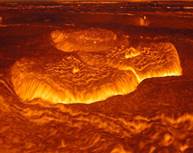 Venus is covered with solid rocks. Hot lava circulates beneath them, causing tension in a thin surface layer. Lava is constantly erupting from holes and fissures in solid rock. In addition, volcanoes constantly emit jets of small droplets of sulfuric acid. In some places, thick lava, gradually oozing, accumulates in the form of huge puddles up to 25 km wide. In other places, huge bubbles of lava form on the surface of the dome, which then fall off.
Venus is covered with solid rocks. Hot lava circulates beneath them, causing tension in a thin surface layer. Lava is constantly erupting from holes and fissures in solid rock. In addition, volcanoes constantly emit jets of small droplets of sulfuric acid. In some places, thick lava, gradually oozing, accumulates in the form of huge puddles up to 25 km wide. In other places, huge bubbles of lava form on the surface of the dome, which then fall off.
On the surface of Venus, a rock rich in potassium, uranium and thorium was found, which, under terrestrial conditions, corresponds not to the composition of primary volcanic rocks, but to secondary ones that have undergone exogenous processing. In other places, coarse rubble and blocky material of dark rocks with a density of 2.7-2.9 g/cm and other elements typical of basalts occur on the surface. Thus, the surface rocks of Venus turned out to be the same as on the Moon, Mercury and Mars, erupted igneous rocks of the basic composition.
Little is known about the interior of Venus. It probably has a metal core taking up 50% of its radius. But the planet does not have a magnetic field due to its very slow rotation.
Venus is by no means a hospitable world, as it was once supposed. With its atmosphere of carbon dioxide, clouds of sulfuric acid and terrible heat, it is completely unsuitable for humans. Under the weight of this information, some hopes collapsed: after all, less than 20 years ago, many scientists considered Venus to be a more promising object for space research than Mars.
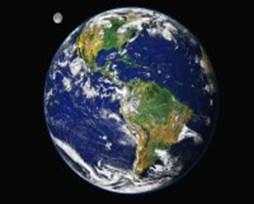
Earth.
General information.
Earth is the third planet from the Sun in the solar system. The shape of the Earth is close to an ellipsoid, flattened at the poles and stretched in the equatorial zone. The average radius of the Earth is 6371.032 km, polar - 6356.777 km, equatorial - 6378.160 km. Weight - 5.976 * 1024 kg. The average density of the Earth is 5518 kg/m³. The surface area of the Earth is 510.2 million km², of which approximately 70.8% is in the oceans. Its average depth is about 3.8 km, maximum ( Mariana Trench in the Pacific Ocean) is equal to 11.022 km; the volume of water is 1370 million km³, the average salinity is 35 g/l. Land makes up 29.2%, respectively, and forms six continents and islands. It rises above sea level by an average of 875 m; the highest height (the peak of Chomolungma in the Himalayas) is 8848 m. Mountains occupy more than 1/3 of the land surface. Deserts cover about 20% of the land surface, savannas and light forests - about 20%, forests - about 30%, glaciers - over 10%. Over 10% of the land is occupied by agricultural land.
The Earth has only one satellite, the Moon.
Thanks to its unique, perhaps the only one in the universe natural conditions, The Earth has become the place where it originated and developed organic life. By According to modern cosmogonic ideas, the planet was formed approximately 4.6 - 4.7 billion years ago from a protoplanetary cloud captured by the attraction of the Sun. The formation of the first, most ancient of the studied rocks took 100-200 million years. Approximately 3.5 billion years ago, conditions favorable for the emergence of life arose. Homo sapiens (the Homo sapiens) as a species appeared about half a million years ago, and the formation of the modern type of man is attributed to the time of the retreat of the first glacier, that is, about 40 thousand years ago.
Traffic.
Like other planets, it moves around the Sun in an elliptical orbit, the eccentricity of which is 0.017. The distance from the Earth to the Sun at different points of the orbit is not the same. The average distance is about 149.6 million km. In the process of the movement of our planet around the Sun, the plane of the earth's equator moves parallel to itself in such a way that in some parts of the orbit the globe is inclined to the Sun with its northern hemisphere, and in others - with its southern one. The period of revolution around the Sun is 365.256 days, with a daily rotation - 23 hours 56 minutes. The axis of rotation of the Earth is located at an angle of 66.5º to the plane of its movement around the Sun.
Atmosphere .
The Earth's atmosphere consists of 78% nitrogen and 21% oxygen (there are very few other gases in the atmosphere); it is the result of a long evolution under the influence of geological, chemical and biological processes. Perhaps the Earth's early atmosphere was rich in hydrogen, which then escaped. The degassing of the bowels filled the atmosphere with carbon dioxide and water vapor. But the vapor condensed in the oceans, and the carbon dioxide was trapped in carbonate rocks. Thus, nitrogen remained in the atmosphere, and oxygen appeared gradually as a result of the vital activity of the biosphere. Even 600 million years ago, the oxygen content in the air was 100 times lower than today.
Our planet is surrounded by a vast atmosphere. According to temperature, the composition and physical properties of the atmosphere can be divided into different layers. The troposphere is the region between the Earth's surface and a height of 11 km. This is a rather thick and dense layer containing most of the water vapor in the air. Almost all atmospheric phenomena that are of direct interest to the inhabitants of the Earth take place in it. The troposphere contains clouds, precipitation, etc. The layer separating the troposphere from the next atmospheric layer, the stratosphere, is called the tropopause. This is an area of very low temperatures.
The composition of the stratosphere is the same as that of the troposphere, but ozone appears and concentrates in it. The ionosphere, that is, the ionized layer of air, is formed both in the troposphere and in lower layers. It reflects high frequency radio waves.
Atmosphere pressure at the level of the ocean surface is approximately 0.1 MPa under normal conditions. It is believed that the earth's atmosphere has changed greatly in the process of evolution: it has been enriched with oxygen and acquired a modern composition as a result of long-term interaction with rocks and with the participation of the biosphere, i.e., plant and animal organisms. Evidence that such changes have indeed taken place are, for example, deposits of coal and thick layers of carbonate deposits in sedimentary rocks, they contain a huge amount of carbon, which used to be part of the earth's atmosphere in the form of carbon dioxide and carbon monoxide. Scientists believe that the ancient atmosphere originated from the gaseous products of volcanic eruptions; its composition is judged by the chemical analysis of gas samples "walled up" in the cavities of ancient rocks. The studied samples, which are approximately 3.5 billion years old, contain approximately 60% carbon dioxide, and the remaining 40% are sulfur compounds, ammonia, hydrogen chloride and fluoride. Nitrogen and inert gases were found in a small amount. All oxygen was chemically bound.
For biological processes on Earth, the ozonosphere is of great importance - the ozone layer located at an altitude of 12 to 50 km. The area above 50-80 km is called the ionosphere. Atoms and molecules in this layer are intensely ionized by solar radiation, in particular ultraviolet radiation. If not ozone layer, radiation fluxes would reach the surface of the Earth, causing destruction in the living organisms present there. Finally, at distances greater than 1000 km, the gas is so rarefied that collisions between molecules cease to play a significant role, and the atoms are more than half ionized. At a height of about 1.6 and 3.7 Earth radii are the first and second radiation belts.
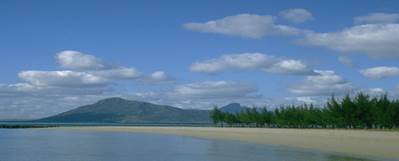
The structure of the planet.
The main role in the study of the internal structure of the Earth is played by seismic methods based on the study of the propagation in its thickness of elastic waves (both longitudinal and transverse) that occur during seismic events - during natural earthquakes and as a result of explosions. Based on these studies, the Earth is conventionally divided into three regions: the crust, the mantle, and the core (in the center). The outer layer - the crust - has an average thickness of about 35 km. The main types of the earth's crust are continental (mainland) and oceanic; in the transition zone from the mainland to the ocean, an intermediate type of crust is developed. The thickness of the crust varies over a fairly wide range: the oceanic crust (taking into account the water layer) has a thickness of about 10 km, while the thickness of the continental crust is tens of times greater. Surface deposits occupy a layer about 2 km thick. Below them is a granite layer (on the continents its thickness is 20 km), and below - about 14 km (both on the continents and in the oceans) basalt layer (lower crust). The density at the center of the Earth is about 12.5 g/cm³. The average densities are: 2.6 g / cm³ - at the surface of the Earth, 2.67 g / cm³ - for granite, 2.85 g / cm³ - for basalt.
To a depth of about 35 to 2885 km, the Earth's mantle extends, which is also called the silicate shell. It is separated from the crust by a sharp boundary (the so-called Mohorovich boundary), deeper than which the velocities of both longitudinal and transverse elastic seismic waves, as well as the mechanical density, increase abruptly. Densities in the mantle increase with increasing depth from about 3.3 to 9.7 g/cm3. Extensive lithospheric plates are located in the crust and (partially) in the mantle. Their secular movements not only determine the drift of the continents, which noticeably affects the appearance of the Earth, but are also related to the location of seismic zones on the planet. Another boundary discovered by seismic methods (the Gutenberg boundary) - between the mantle and the outer core - is located at a depth of 2775 km. She has speed longitudinal waves drops from 13.6 km/s (in the mantle) to 8.1 km/s (in the core), and the velocity of transverse waves decreases from 7.3 km/s to zero. The latter means that the outer core is liquid. According to modern concepts, the outer core consists of sulfur (12%) and iron (88%). Finally, at depths greater than 5120 km, seismic methods reveal the presence of a solid inner core, which accounts for 1.7% of the Earth's mass. Presumably, this is an iron-nickel alloy (80% Fe, 20% Ni).
The gravitational field of the Earth is described with high accuracy by the law gravity Newton. Acceleration free fall above the Earth's surface is determined by both the gravitational and centrifugal force due to the Earth's rotation. The free fall acceleration at the surface of the planet is 9.8 m/s².
The earth also has a magnetic electric fields. The magnetic field above the Earth's surface consists of a constant (or changing slowly enough) and a variable part; the latter is usually referred to as variations of the magnetic field. The main magnetic field has a structure close to dipole. The magnetic dipole moment of the Earth, equal to 7.98T10^25 cgsm units, is directed approximately opposite to the mechanical one, although at present the magnetic poles are somewhat shifted with respect to the geographic ones. Their position, however, changes with time, and although these changes are quite slow, over geological time intervals, according to paleomagnetic data, even magnetic inversions, that is, polarity reversals, are detected. The magnetic field strengths at the north and south magnetic poles are 0.58 and 0.68 Oe, respectively, and about 0.4 Oe at the geomagnetic equator.
The electric field above the Earth's surface has an average intensity of about 100 V / m and is directed vertically downward - this is the so-called fair weather field, but this field experiences significant (both periodic and irregular) variations.
Moon.
The Moon is a natural satellite of the Earth and the closest celestial body to us. The average distance to the Moon is 384,000 kilometers, the diameter of the Moon is about 3476 km. The average density of the Moon is 3.347 g/cm³, or about 0.607 of the average density of the Earth. The mass of the satellite is 73 trillion tons. The acceleration of gravity on the surface of the moon is 1.623 m/s².
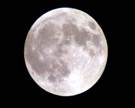 The moon moves around the earth average speed 1.02 km/sec in an approximately elliptical orbit in the same direction as the vast majority of other bodies in the solar system, i.e. counter-clockwise when viewed from the Moon's orbit from the north celestial pole. The period of revolution of the Moon around the Earth, the so-called sidereal month, is equal to 27.321661 mean days, but is subject to slight fluctuations and a very small secular reduction.
The moon moves around the earth average speed 1.02 km/sec in an approximately elliptical orbit in the same direction as the vast majority of other bodies in the solar system, i.e. counter-clockwise when viewed from the Moon's orbit from the north celestial pole. The period of revolution of the Moon around the Earth, the so-called sidereal month, is equal to 27.321661 mean days, but is subject to slight fluctuations and a very small secular reduction.
Not being protected by the atmosphere, the surface of the Moon heats up to + 110 ° C during the day, and cools down to -120 ° C at night, however, as radio observations have shown, these huge temperature fluctuations penetrate only a few decimeters deep due to the extremely weak thermal conductivity of the surface layers.
The relief of the lunar surface was mainly elucidated as a result of many years of telescopic observations. The "lunar seas", occupying about 40% of the visible surface of the Moon, are flat lowlands, crossed by cracks and low winding shafts; there are relatively few large craters on the seas. Many seas are surrounded by concentric ring ridges. The rest, lighter surface is covered with numerous craters, ring-shaped ridges, furrows, and so on.
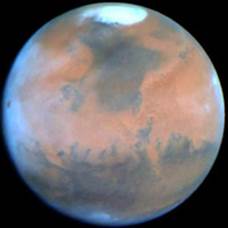
Mars.
General information.
Mars is the fourth planet in the solar system. Mars - from the Greek "Mas" - male power - the god of war. According to the main physical characteristics, Mars belongs to the terrestrial planets. In diameter, it is almost half the size of Earth and Venus. The average distance from the Sun is 1.52 AU. The equatorial radius is 3380 km. The average density of the planet is 3950 kg/m³. Mars has two satellites - Phobos and Deimos.
Atmosphere.
The planet is shrouded in a gaseous shell - an atmosphere that has a lower density than the earth's. Even in the deep depressions of Mars, where the atmospheric pressure is greatest, it is approximately 100 times less than at the Earth's surface, and at the level of the Martian mountain peaks, it is 500-1000 times less. In composition, it resembles the atmosphere of Venus and contains 95.3% carbon dioxide with an admixture of 2.7% nitrogen, 1.6% argon, 0.07% carbon monoxide, 0.13% oxygen and approximately 0.03% water vapor, the content which changes, as well as impurities of neon, krypton, xenon.
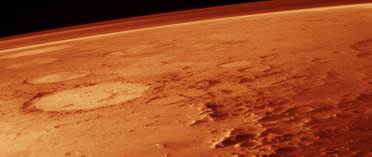
The average temperature on Mars is much lower than on Earth, about -40 ° C. Under the most favorable conditions in the summer in the daytime half of the planet, the air warms up to 20 ° C - quite an acceptable temperature for the inhabitants of the Earth. But on a winter night, frost can reach -125 ° C. Such sharp temperature drops are caused by the fact that the rarefied atmosphere of Mars is not able to retain heat for a long time.
Strong winds often blow over the surface of the planet, the speed of which reaches 100 m/s. Low gravity allows even rarefied air currents to raise huge clouds of dust. Sometimes quite vast areas on Mars are covered by grandiose dust storms. The global dust storm raged from September 1971 to January 1972, lifting about a billion tons of dust into the atmosphere to a height of more than 10 km.
There is very little water vapor in the atmosphere of Mars, but at low pressure and temperature it is in a state close to saturation, and often collects in clouds. Martian clouds are rather inexpressive compared to those on Earth, although they have a variety of shapes and types: cirrus, wavy, leeward (near large mountains and under the slopes of large craters, in places protected from the wind). Over lowlands, canyons, valleys - and at the bottom of craters in the cold time of the day there are often fogs.
As the images from the American landing stations "Viking-1" and "Viking-2" showed, the Martian sky in clear weather has a pinkish color, which is explained by the scattering of sunlight on dust particles and the illumination of the haze by the orange surface of the planet. In the absence of clouds, the gaseous envelope of Mars is much more transparent than the earth's, including for ultraviolet rays dangerous to living organisms.
Seasons.
A solar day on Mars lasts 24 hours 39 minutes. 35 s. A significant inclination of the equator to the plane of the orbit leads to the fact that in some parts of the orbit, mainly the northern latitudes of Mars are illuminated and heated by the Sun, in others - the southern ones, that is, there is a change of seasons. The Martian year is about 686.9 days long. The change of seasons on Mars is the same as on Earth. Seasonal changes are most pronounced in the polar regions. In winter, the polar caps occupy a significant area. The boundary of the northern polar cap can move away from the pole by a third of the distance from the equator, and the boundary of the southern cap overcomes half this distance. This difference is due to the fact that in the northern hemisphere winter occurs when Mars passes through the perihelion of its orbit, and in the southern hemisphere when it passes through aphelion. Because of this, winters in the southern hemisphere are colder than in the northern. The ellipticity of the Martian orbit leads to significant differences in the climate of the northern and southern hemispheres: in the middle latitudes, winters are colder and summers are warmer than in the southern ones, but shorter than in the northern ones .. When summer comes in the northern hemisphere of Mars, the northern polar cap decreases rapidly, but at this time, another grows - near south pole where winter comes. At the end of the 19th - beginning of the 20th century, it was believed that the polar caps of Mars were glaciers and snow. According to modern data, both polar caps of the planet - northern and southern - consist of solid carbon dioxide, that is, dry ice, which is formed when carbon dioxide, which is part of the Martian atmosphere, freezes, and water ice mixed with mineral dust.
The structure of the planet.
Due to the low mass, gravity on Mars is almost three times lower than on Earth. At present, the structure of the gravitational field of Mars has been studied in detail. It indicates a slight deviation from the uniform density distribution in the planet. The core can have a radius up to half the radius of the planet. Apparently, it consists of pure iron or an alloy of Fe-FeS (iron-iron sulfide) and, possibly, hydrogen dissolved in them. Apparently, the core of Mars is partially or completely in a liquid state.
Mars must have a thick crust 70-100 km thick. Between the core and the crust is a silicate mantle enriched in iron. The red iron oxides present in the surface rocks determine the color of the planet. Now Mars continues to cool.
The seismic activity of the planet is weak.
Surface.
The surface of Mars, at first glance, resembles the moon. However, in fact, its relief is very diverse. Throughout the long geological history of Mars, its surface has been altered by volcanic eruptions and marsquakes. Deep scars on the face of the god of war were left by meteorites, wind, water and ice.
The surface of the planet consists, as it were, of two contrasting parts: the ancient highlands covering the southern hemisphere, and the younger plains concentrated in the northern latitudes. In addition, two large volcanic regions stand out - Elysium and Tharsis. The height difference between mountainous and flat areas reaches 6 km. Why different areas differ so much from each other is still unclear. Perhaps such a division is associated with a very old catastrophe - the fall of a large asteroid on Mars.
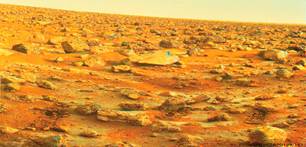
The high-mountain part has preserved traces of an active meteorite bombardment that took place about 4 billion years ago. Meteor craters cover 2/3 of the planet's surface. There are almost as many of them in the old highlands as on the Moon. But many Martian craters have "lost their shape" due to weathering. Some of them, apparently, were once washed away by streams of water. The northern plains look completely different. 4 billion years ago they had a lot of meteorite craters, but then the catastrophic event, which has already been mentioned, erased them from 1/3 of the planet's surface and its relief in this area began to form anew. Separate meteorites fell there later, but in general there are few impact craters in the north.
The appearance of this hemisphere was determined by volcanic activity. Some of the plains are completely covered with ancient igneous rocks. Streams of liquid lava spread over the surface, solidified, and new streams flowed along them. These petrified "rivers" are concentrated around large volcanoes. At the ends of lava tongues, structures similar to terrestrial sedimentary rocks are observed. Probably when the red-hot eruptive masses melted the layers underground ice, quite extensive reservoirs formed on the surface of Mars, which gradually dried up. The interaction of lava and underground ice also led to the appearance of numerous furrows and cracks. In low-lying areas far from volcanoes northern hemisphere stretching sand dunes. Especially a lot of them near the northern polar cap.
The abundance of volcanic landscapes indicates that in the distant past, Mars experienced a rather turbulent geological era, most likely it ended about a billion years ago. The most active processes took place in the regions of Elysium and Tharsis. At one time they were literally squeezed out of the bowels of Mars and now rise above its surface in the form of grandiose swellings: Elysium 5 km high, Tharsis - 10 km. Numerous faults, cracks, ridges are concentrated around these swellings - traces of ancient processes in the Martian crust. The most grandiose system of canyons several kilometers deep - the Mariner Valley - begins at the top of the Tharsis Mountains and stretches 4 thousand kilometers to the east. In the central part of the valley, its width reaches several hundred kilometers. In the past, when the Martian atmosphere was denser, water could drain into the canyons, creating deep lakes in them.
The volcanoes of Mars are exceptional phenomena by earthly standards. But even among them, the volcano Olympus, located in the northwest of the Tharsis Mountains, stands out. The diameter of the base of this mountain reaches 550 km, and the height is 27 km, i.e. it is three times the height of Everest, the highest peak on Earth. Olympus is crowned with a huge 60-kilometer crater. To the east of the highest part of the Tharsis Mountains, another volcano has been discovered - Alba. Although it cannot compete with Olympus in height, its base diameter is almost three times larger.
These volcanic cones are the result of calm eruptions of very liquid lava, similar in composition to the lava of the terrestrial volcanoes of the Hawaiian Islands. Traces of volcanic ash on the slopes of other mountains suggest that catastrophic eruptions have occasionally occurred on Mars.
In the past, flowing water played a huge role in shaping the Martian relief. At the first stages of the study, Mars seemed to astronomers a desert and waterless planet, but when the surface of Mars was photographed from a close distance, it turned out that in the old highlands there are often gullies left as if by flowing water. Some of them look like they were pierced many years ago by stormy, swift currents. They sometimes stretch for many hundreds of kilometers. Some of these "brooks" have a rather respectful age. Other valleys are very similar to the beds of calm earthly rivers. They probably owe their appearance to the melting of underground ice.
Some additional information about Mars can be obtained by indirect methods based on studies of its natural satellites - Phobos and Deimos.
Satellites of Mars.
The moons of Mars were discovered on August 11 and 17, 1877 during the great opposition by American astronomer Asaph Hall. The satellites received such names from Greek mythology: Phobos and Deimos, the sons of Ares (Mars) and Aphrodite (Venus), always accompanied their father. Translated from Greek, “phobos” means “fear”, and “deimos” means “horror”.
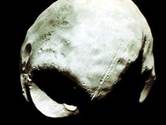

Phobos. Deimos.
Both satellites of Mars move almost exactly in the plane of the planet's equator. With the help of spacecraft, it was established that Phobos and Deimos have an irregular shape and in their orbital position always remain turned to the planet by the same side. The dimensions of Phobos are about 27 km, and Deimos - about 15 km. The surface of the moons of Mars consists of very dark minerals and is covered with numerous craters. One of them - on Phobos has a diameter of about 5.3 km. The craters are probably produced by meteorite bombardment; the origin of the system of parallel furrows is unknown. The angular velocity of the orbital motion of Phobos is so great that, unlike other luminaries, Phobos rises in the west, overtaking the axial rotation of the planet, and sets in the east.
The search for life on Mars.
For a long time, the search for forms of extraterrestrial life was conducted on Mars. When exploring the planet spacecraft of the Viking series, three complex biological experiments were performed: pyrolysis decomposition, gas exchange, label decomposition. They are based on the experience of studying earthly life. The pyrolysis decomposition experiment was based on the definition of photosynthesis processes involving carbon, the label decomposition experiment was based on the assumption that water is necessary for existence, and the gas exchange experiment took into account that Martian life must use water as a solvent. Although all three biological experiments gave a positive result, they are probably non-biological in nature and can be explained by inorganic reactions of the nutrient solution with the material of the Martian nature. So, we can summarize that Mars is a planet that does not have the conditions for the emergence of life.
Conclusion
We got acquainted with state of the art our planet and the planets of the Earth group. The future of our planet, and indeed the entire planetary system, if nothing unforeseen happens, seems clear. The probability that the established order of the planets will be disturbed by some wandering star is small, even within a few billion years. In the near future, one should not expect strong changes in the flow of solar energy. It is likely that ice ages will repeat. A person is able to change the climate, but in doing so, he can make a mistake. The continents will rise and fall in subsequent epochs, but we hope that the processes will be slow. Massive meteorite impacts are possible from time to time.
But basically solar system will retain its modern look.
Plan.
1. Introduction.
2. Mercury.
3. Venus.
6. Conclusion.
7. Literature.
Planet Mercury.

surface of Mercury.

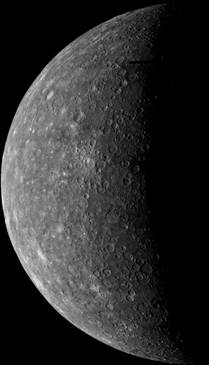
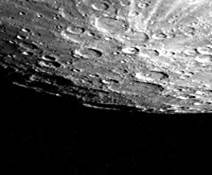
Planet Venus.
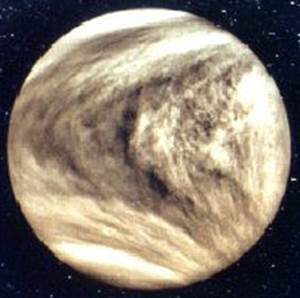
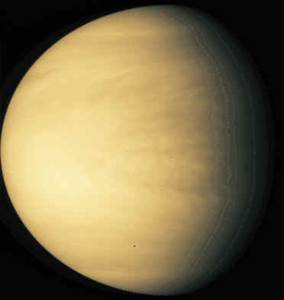
Surface of Venus.

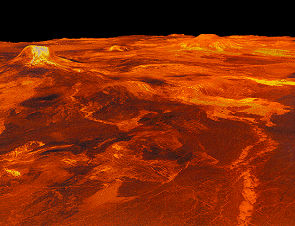
Planet Earth.
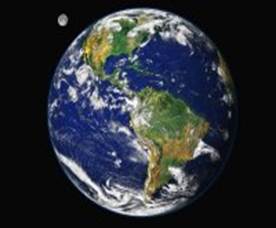
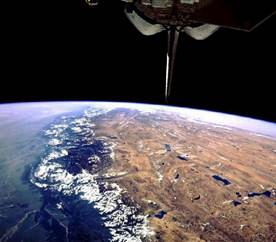
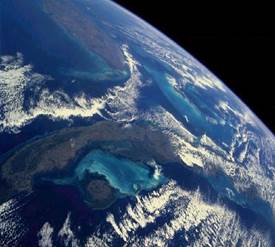
Land surface.

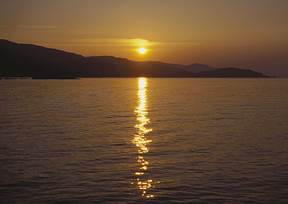
The planet Mars.

Surface of Mars.
